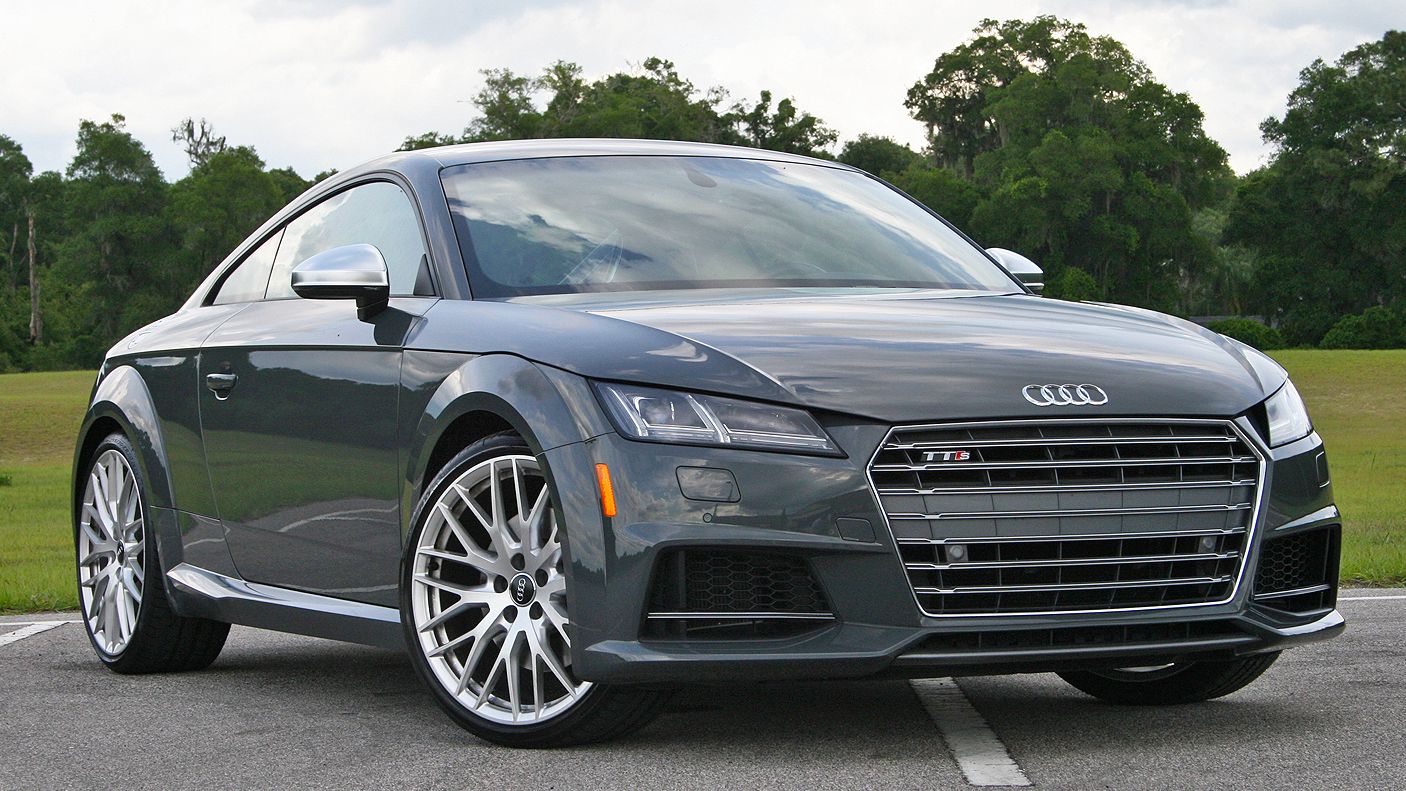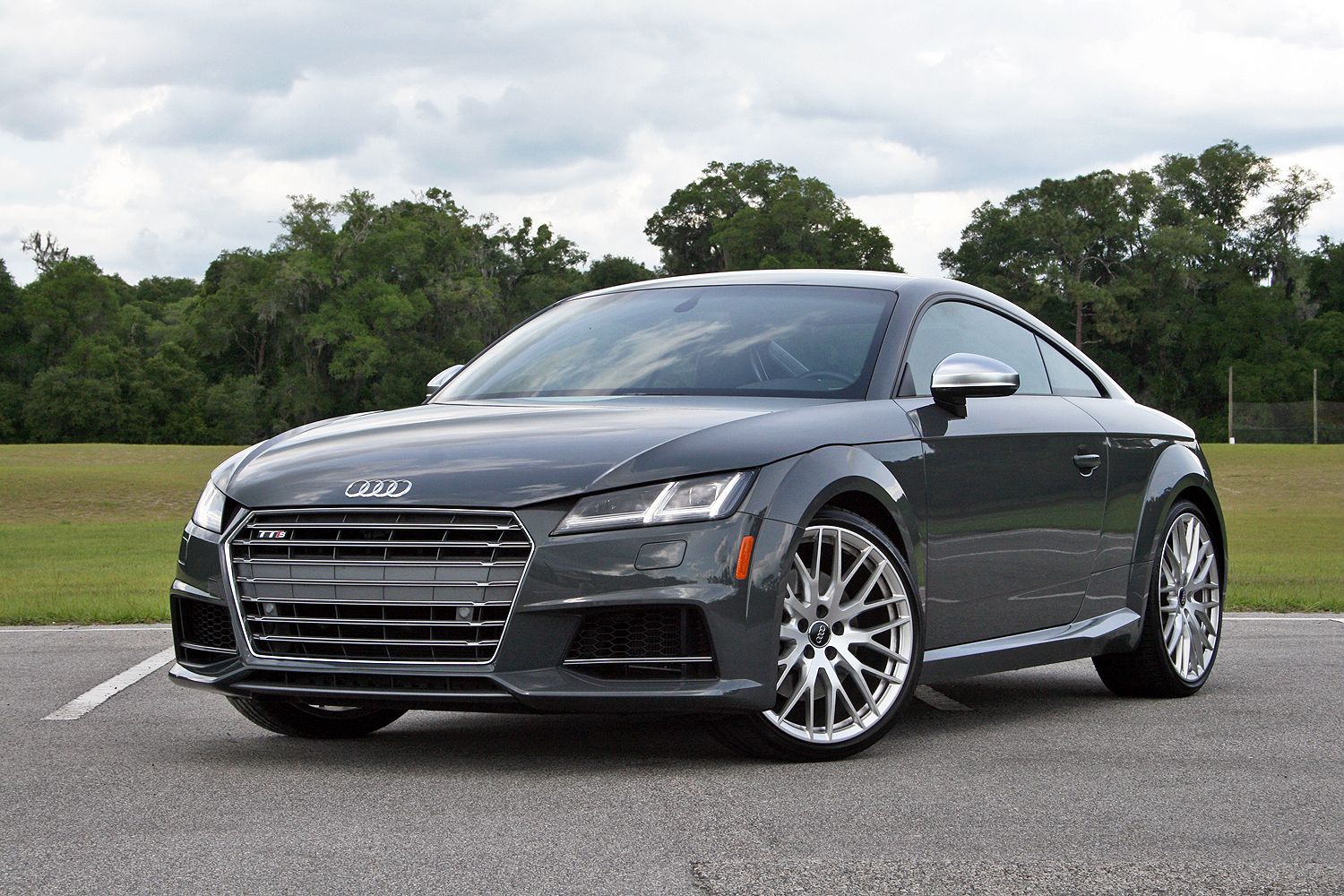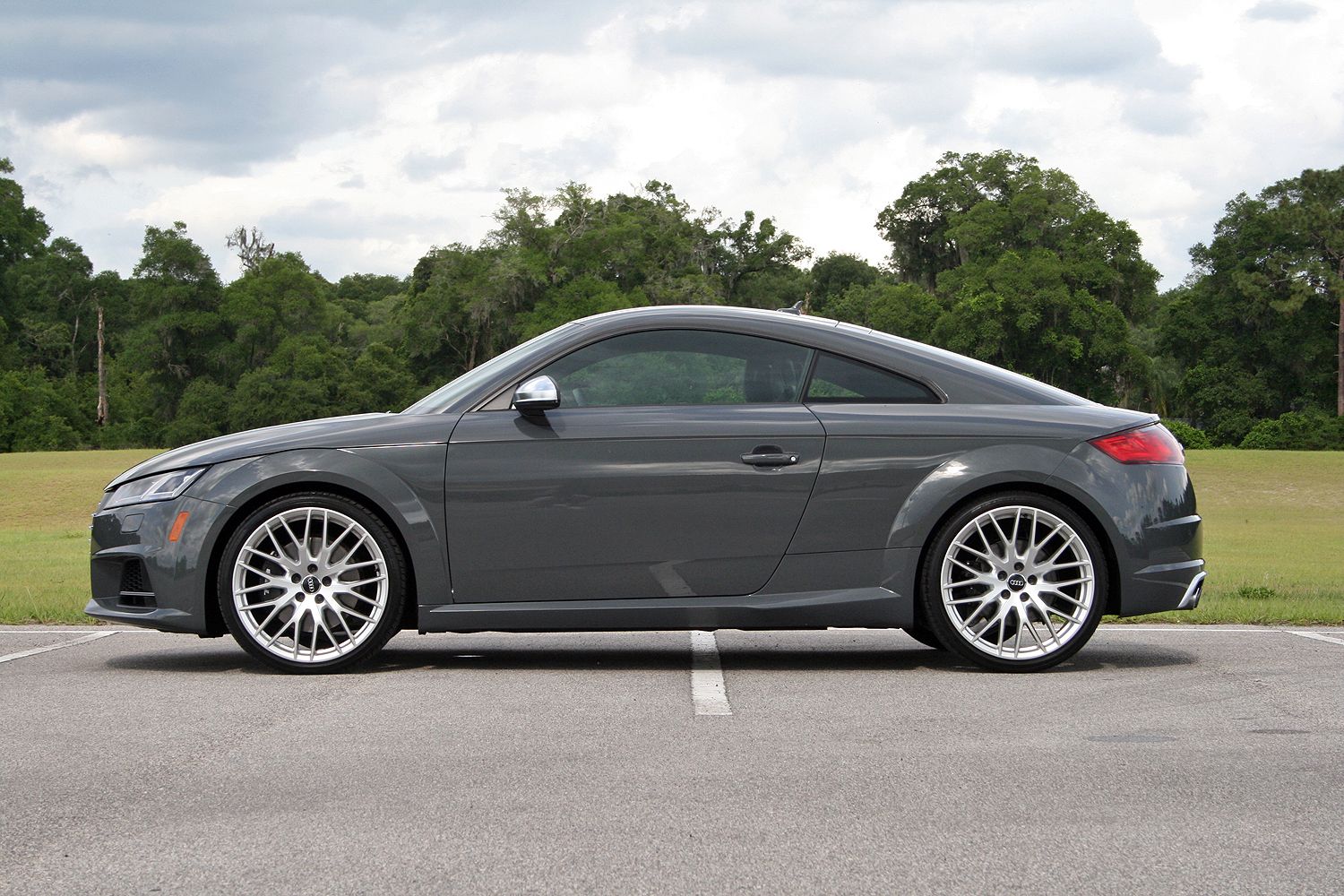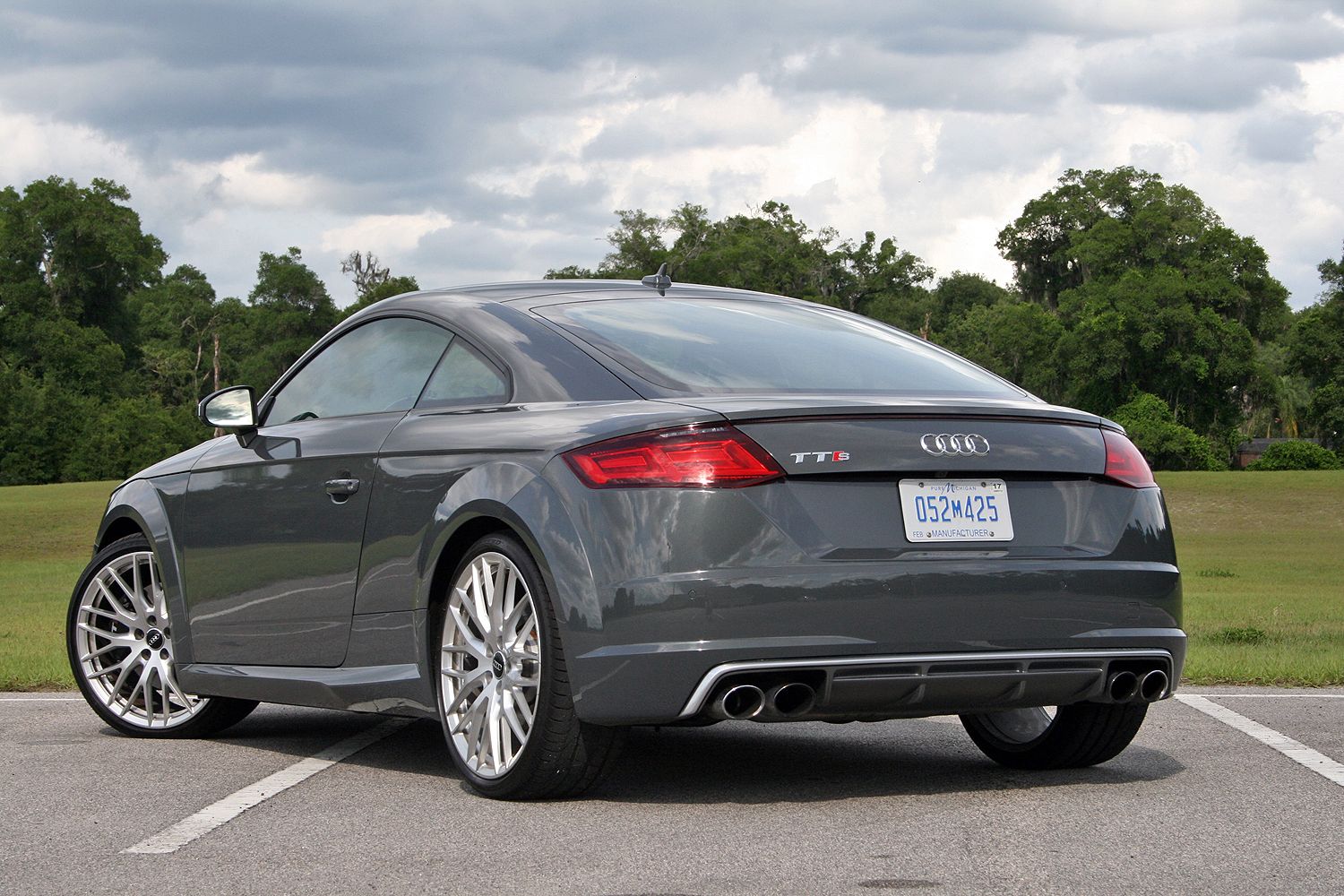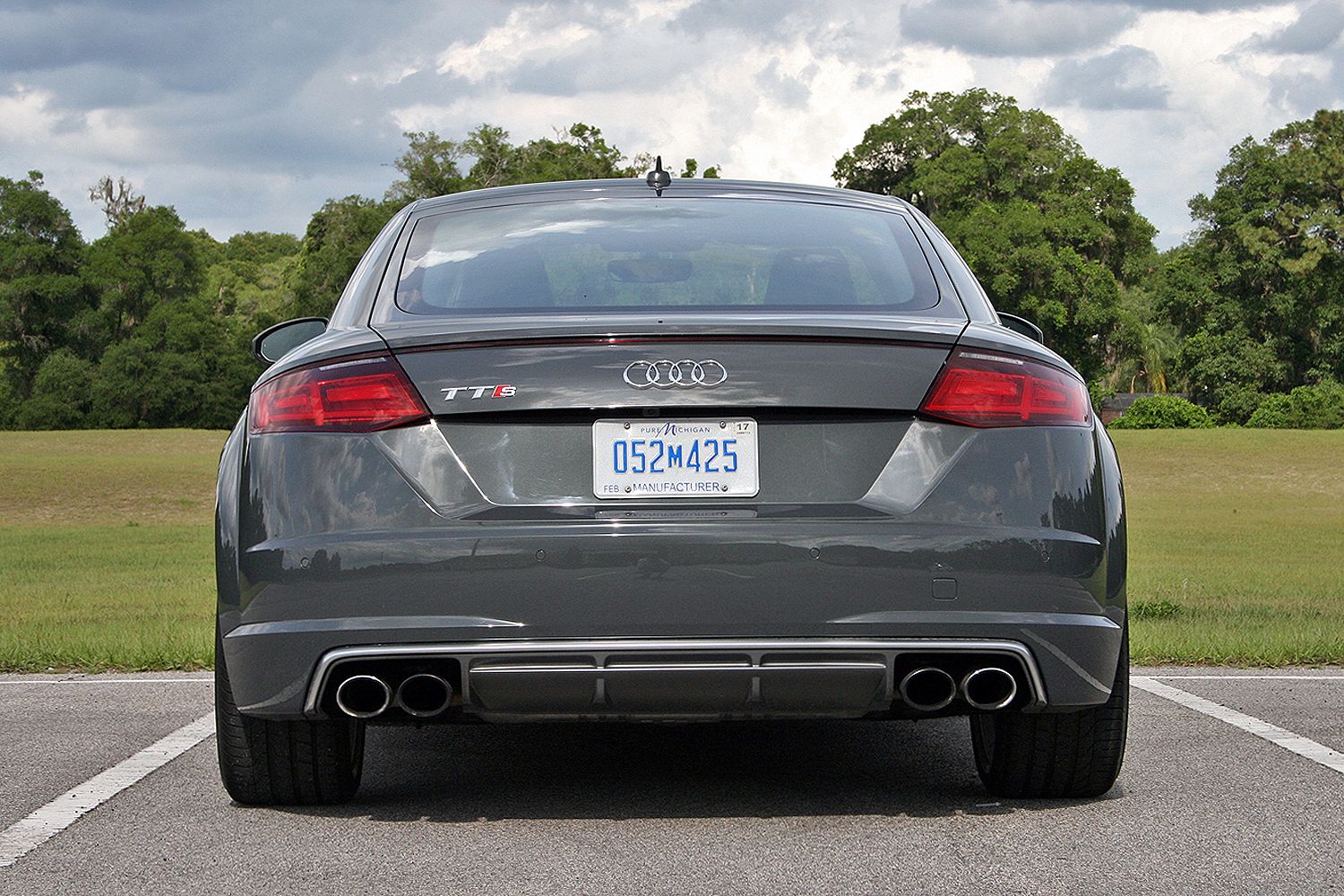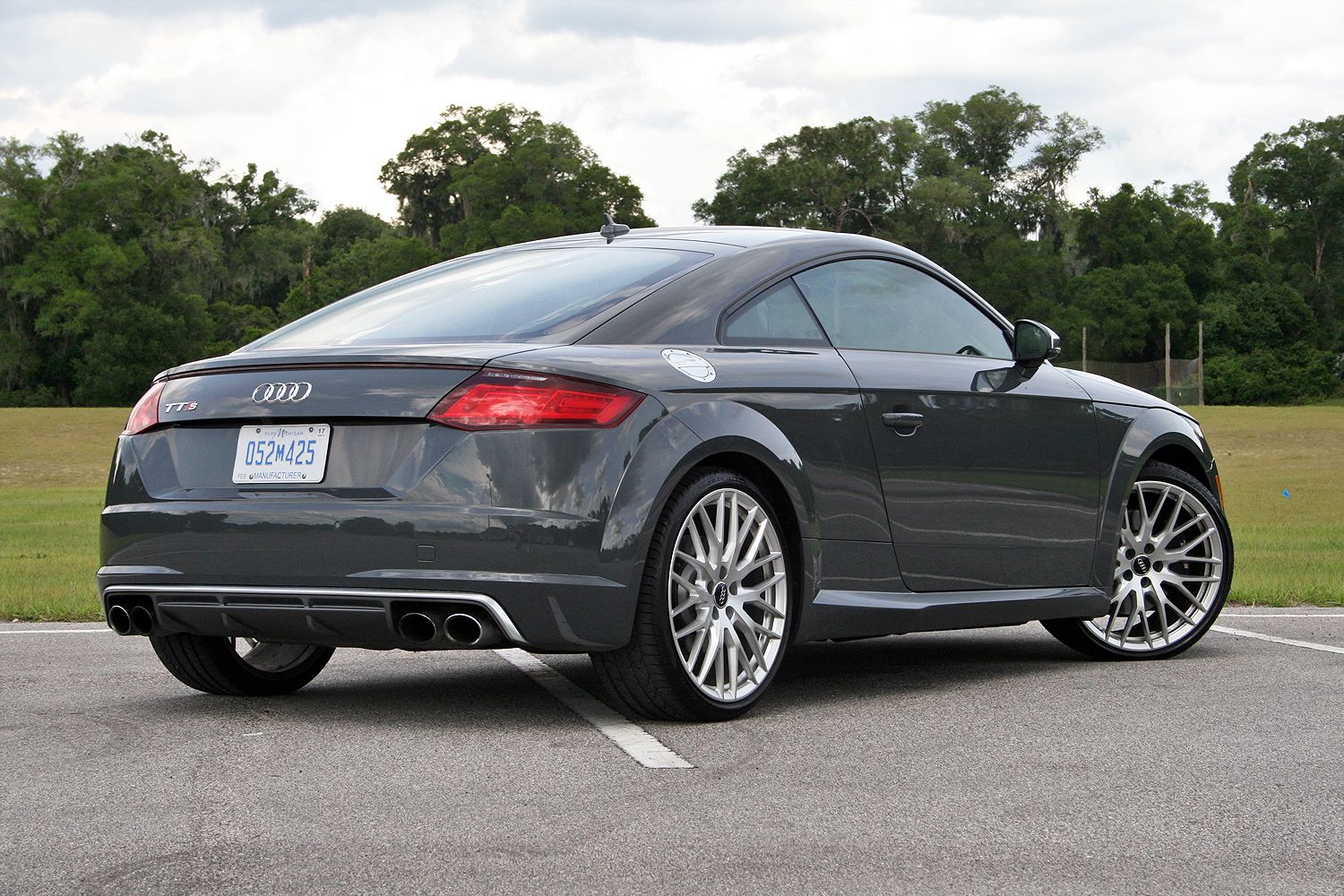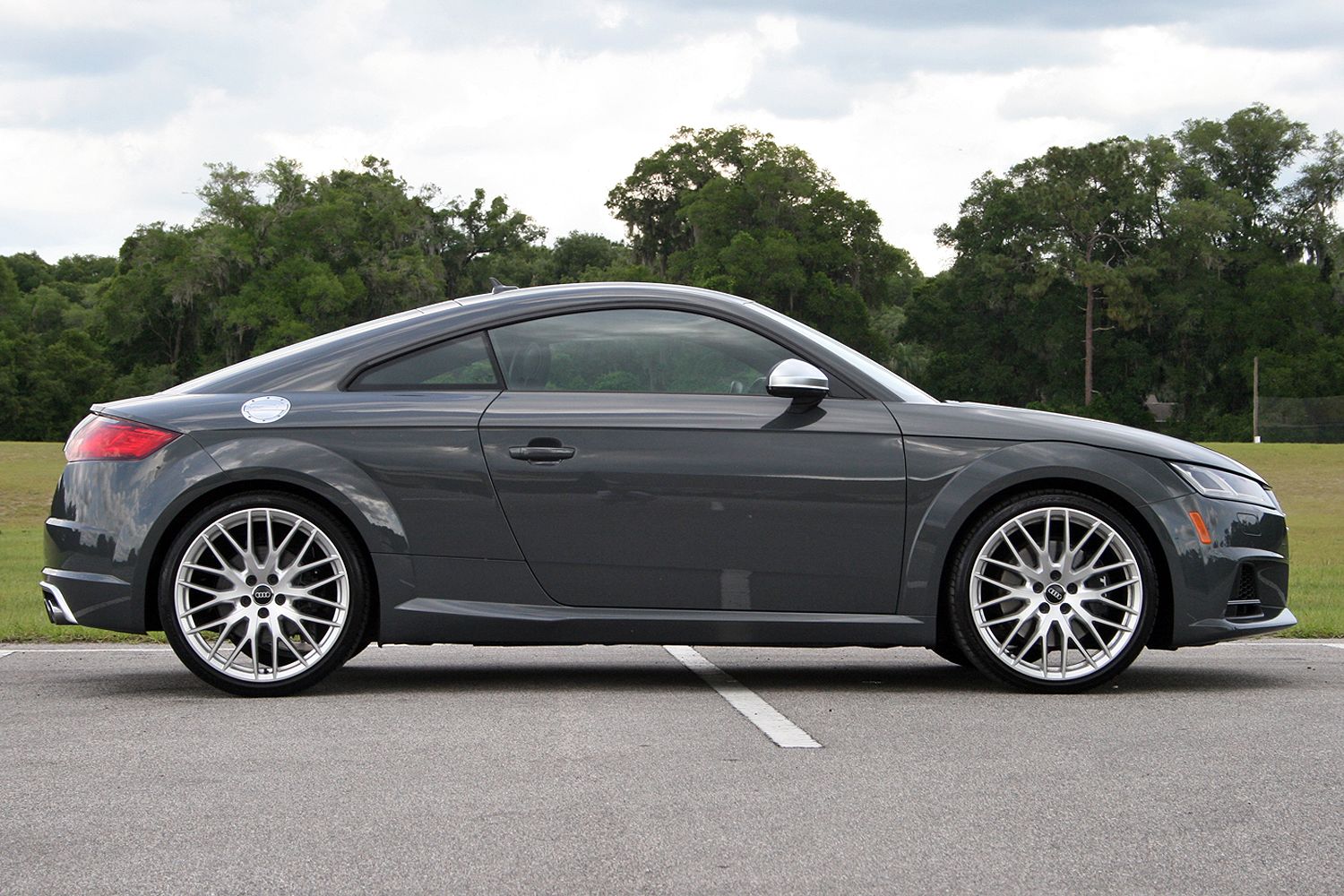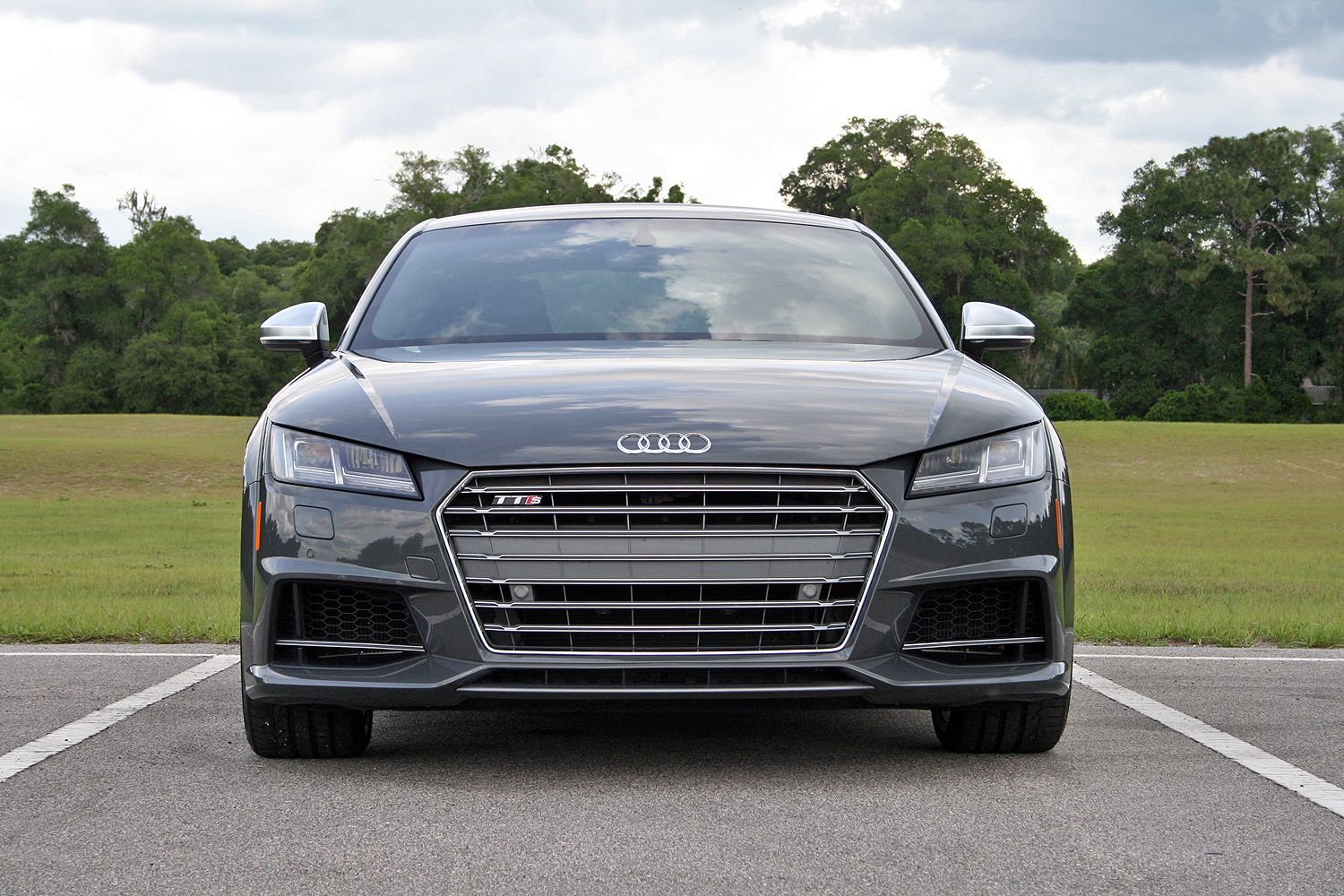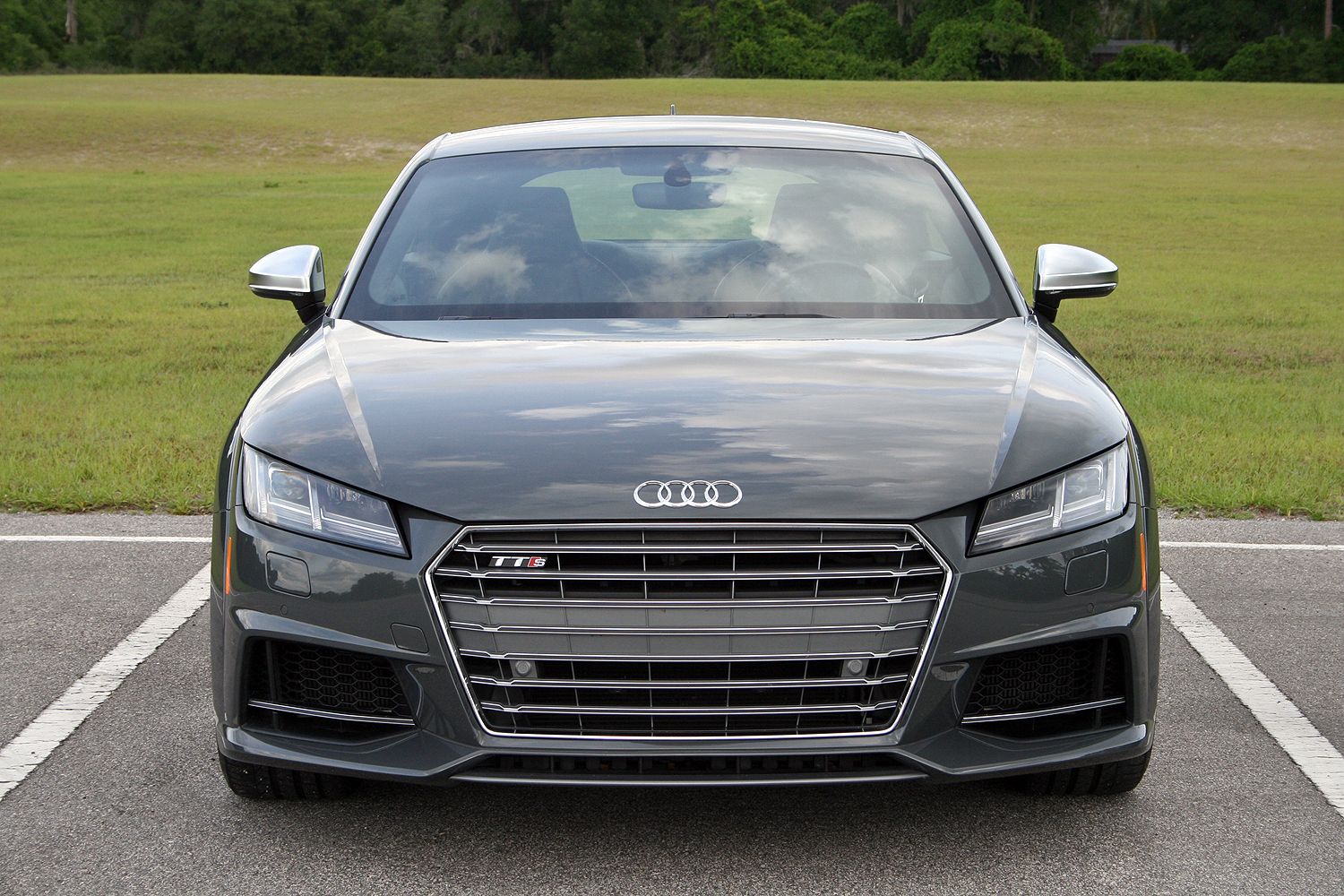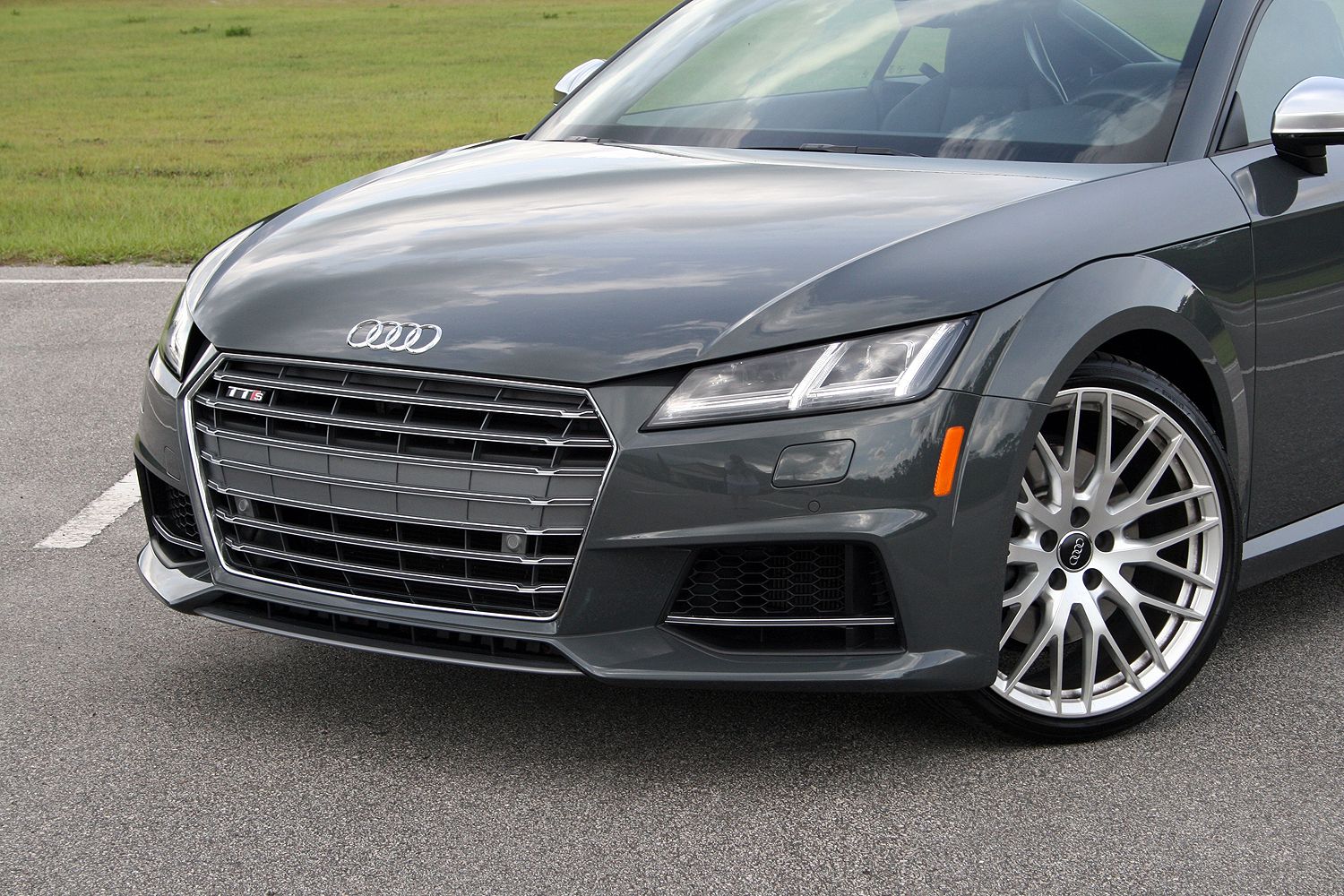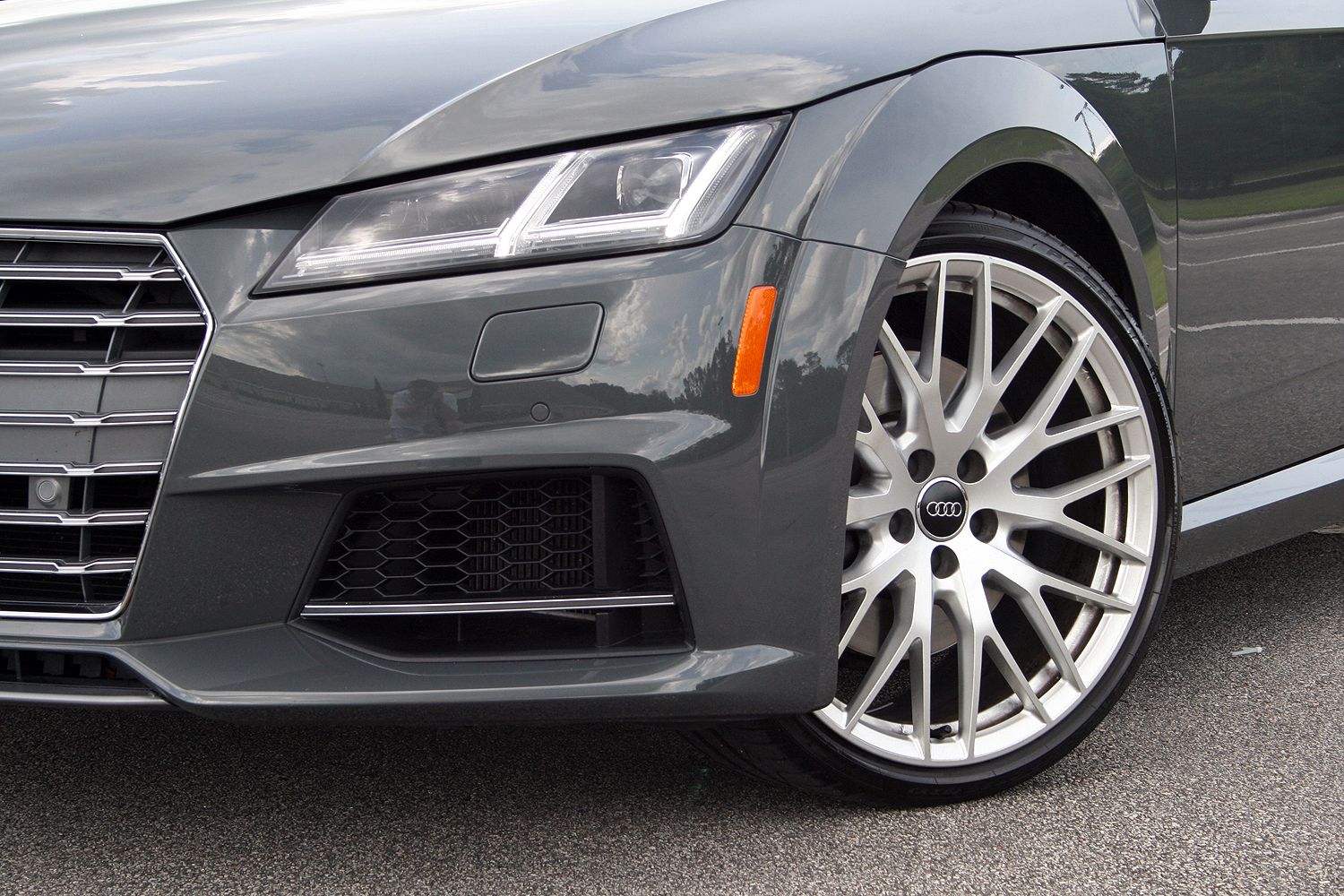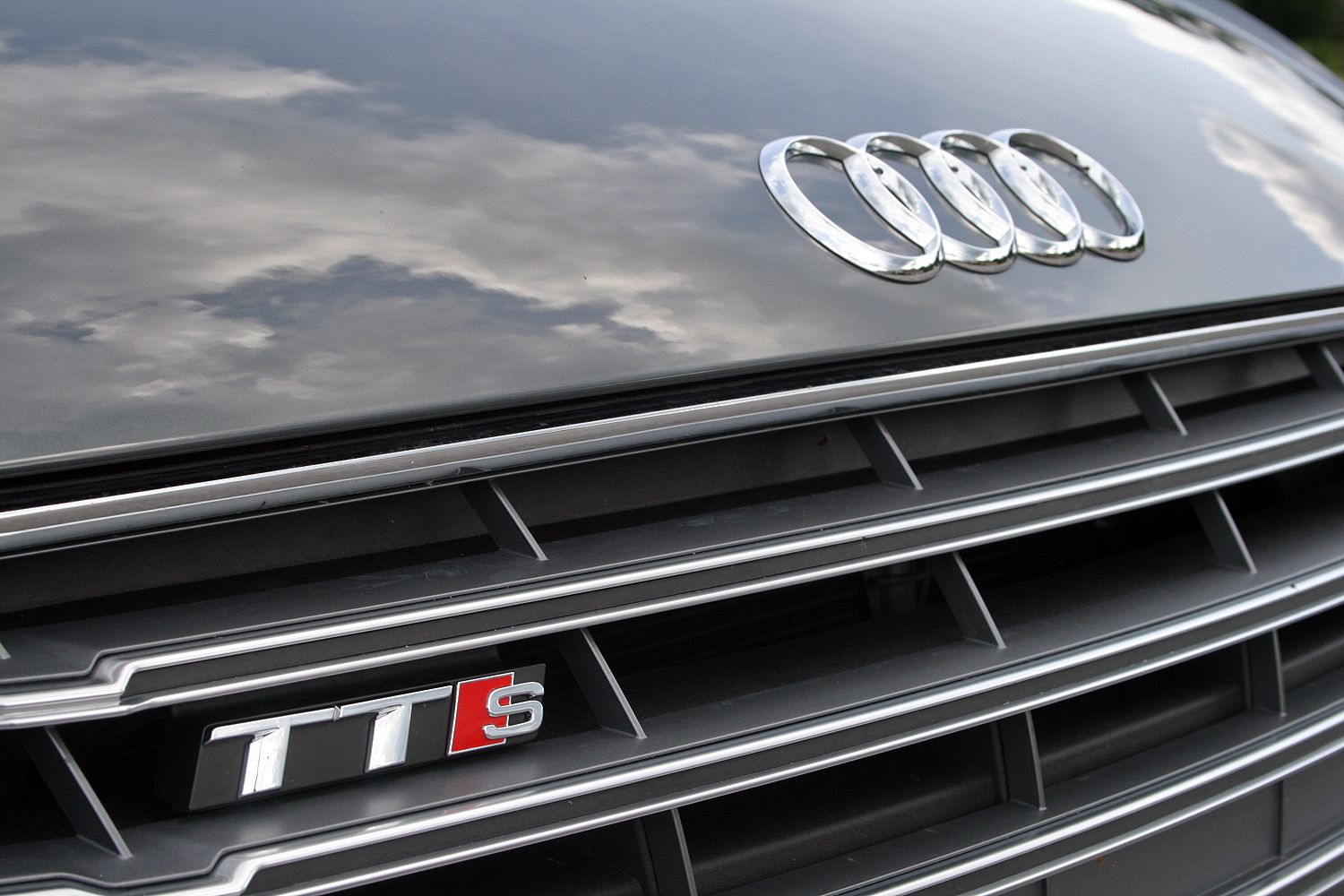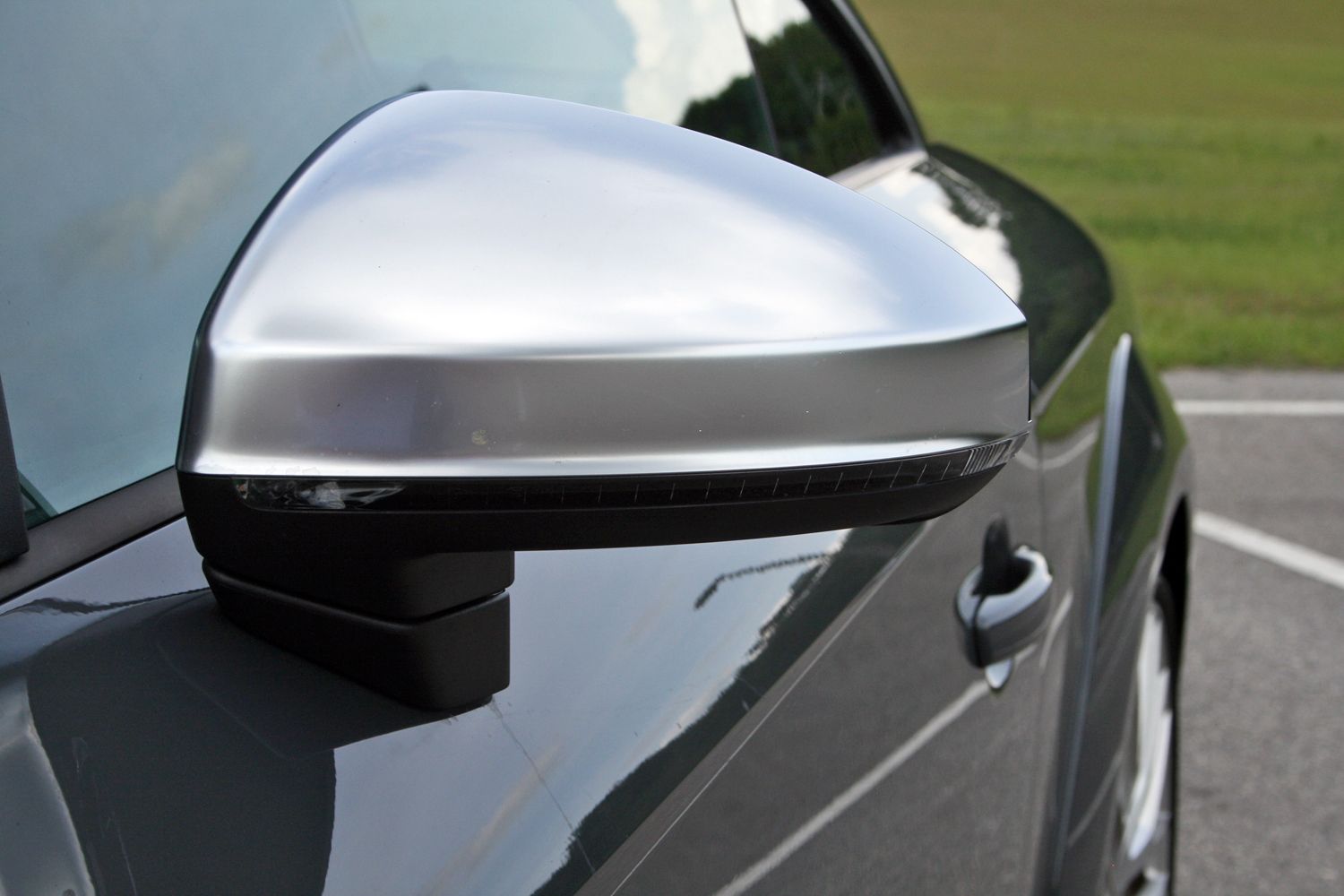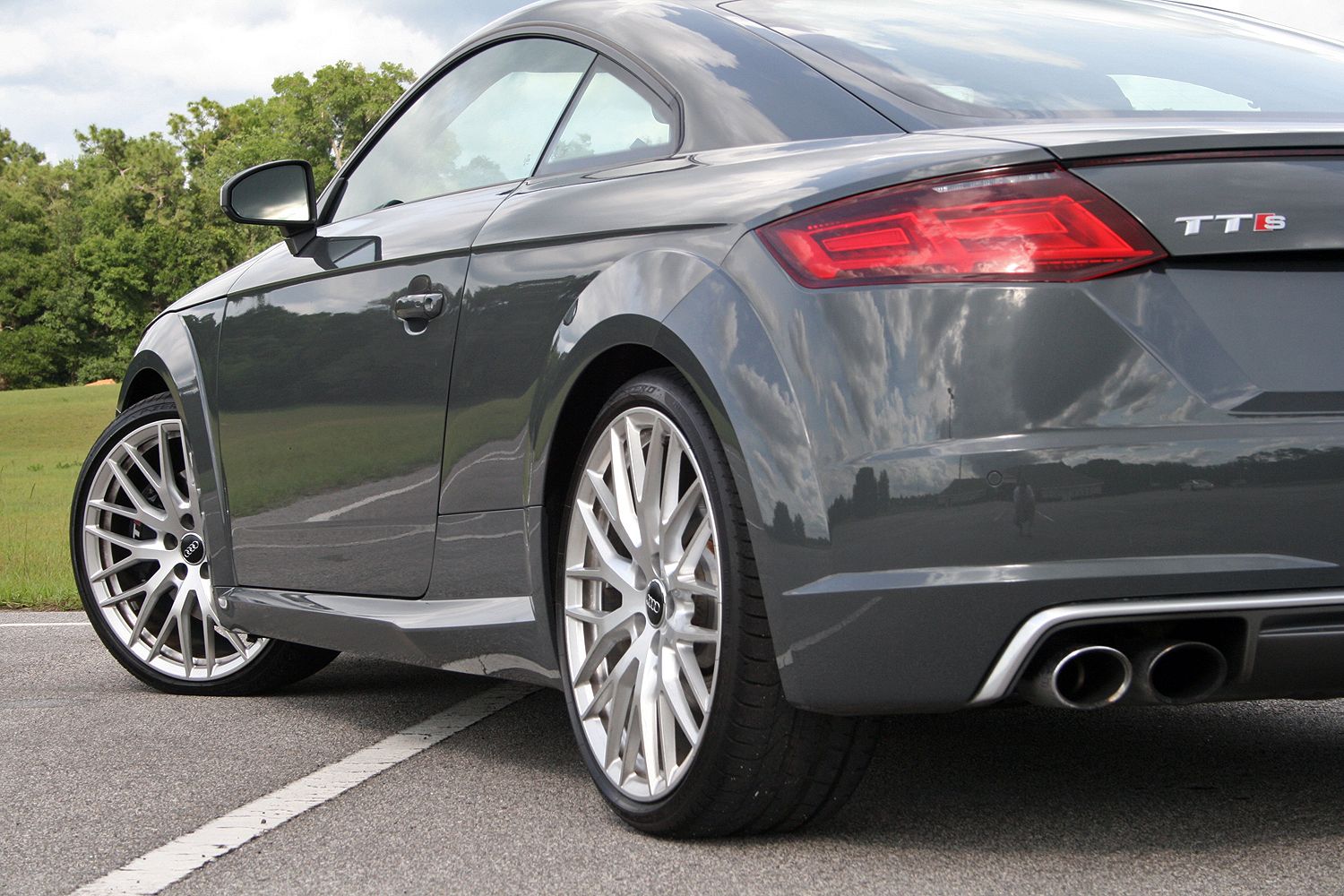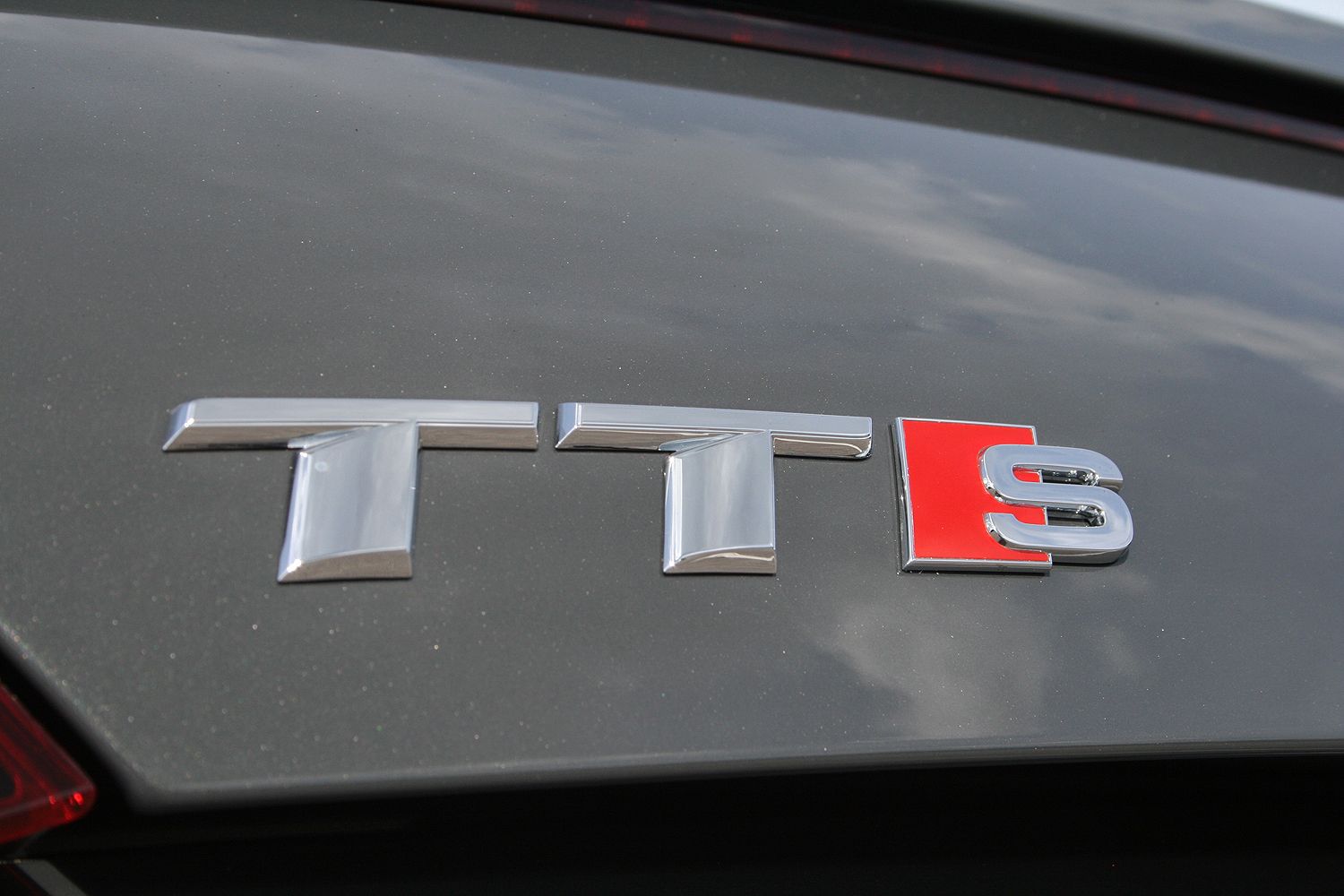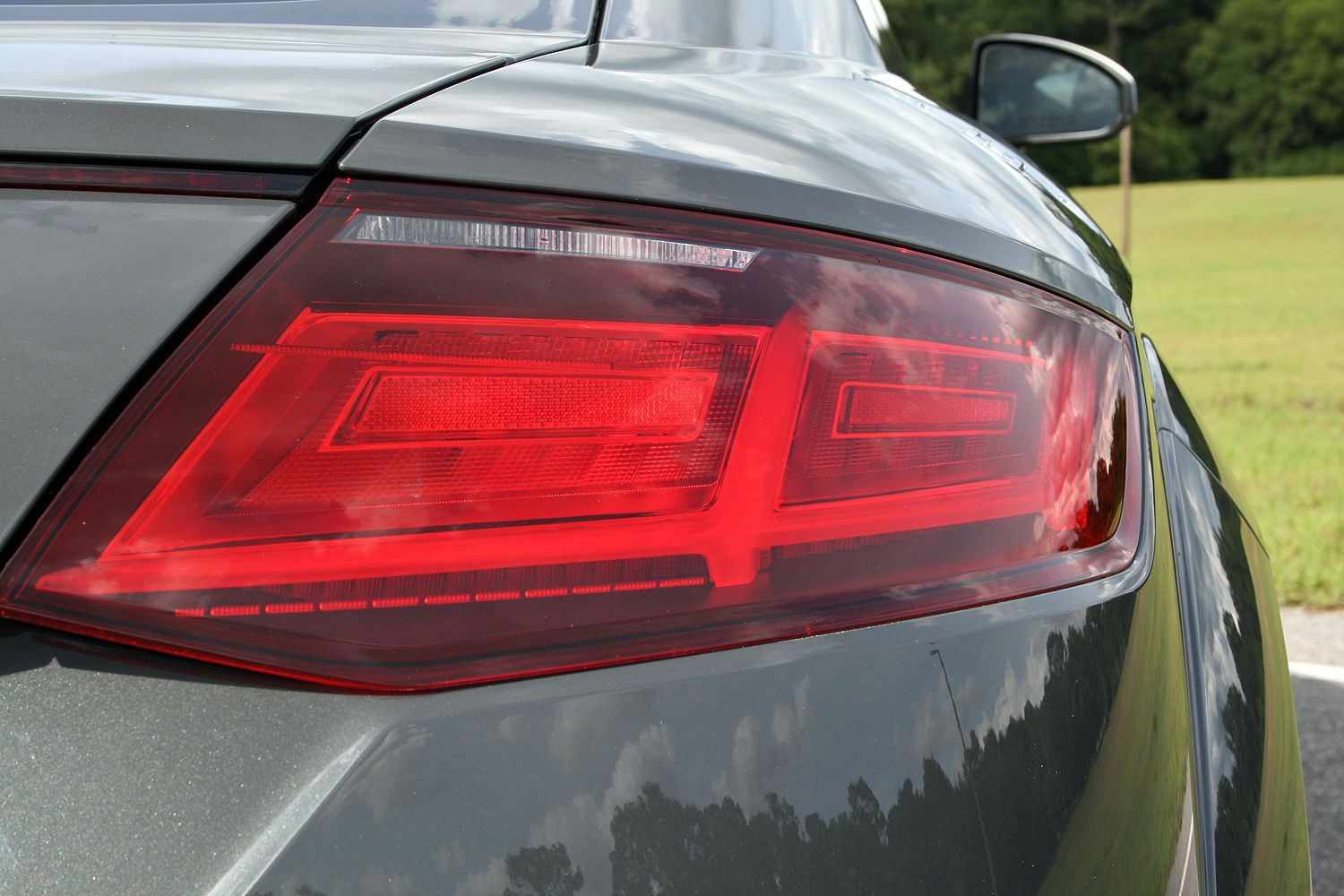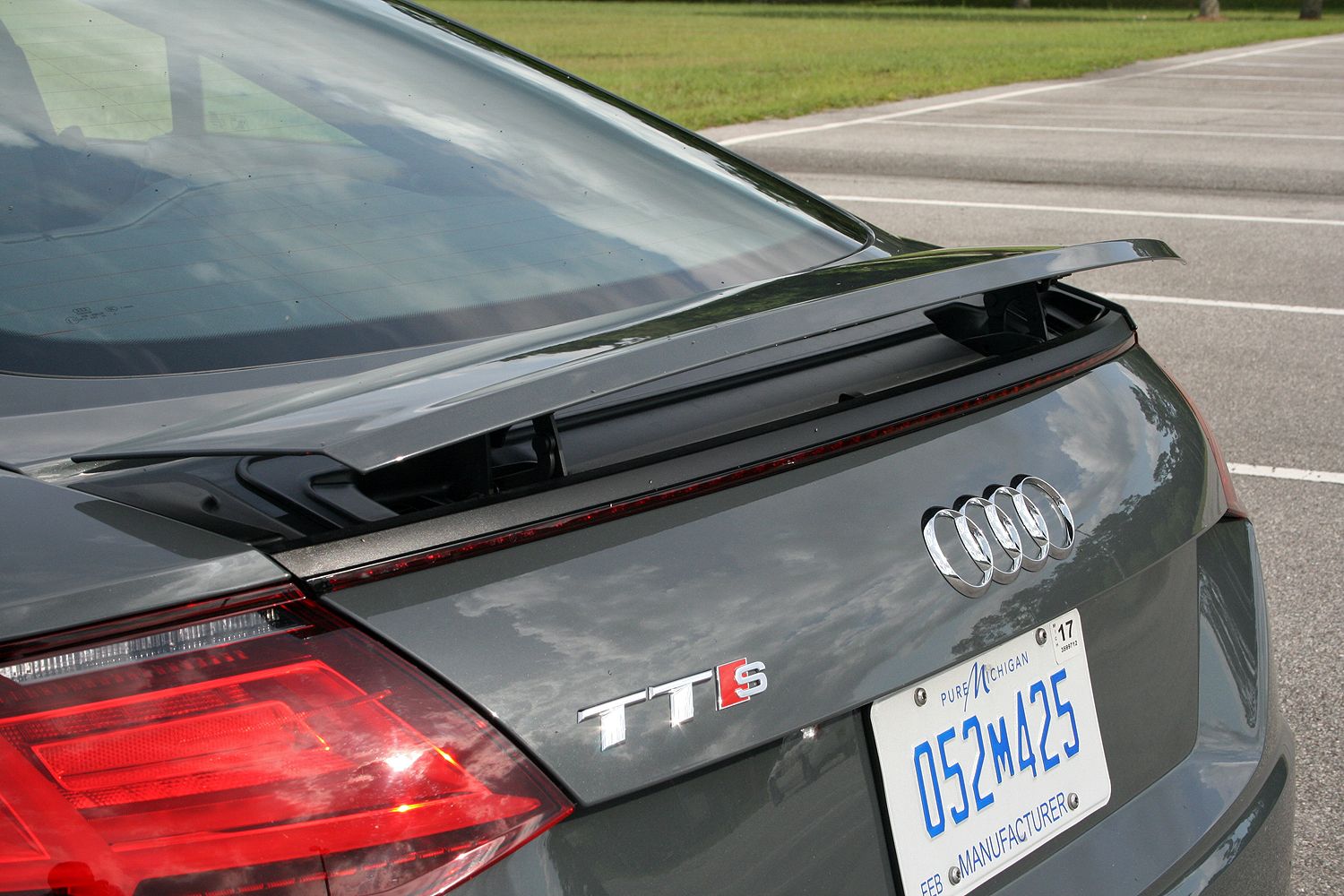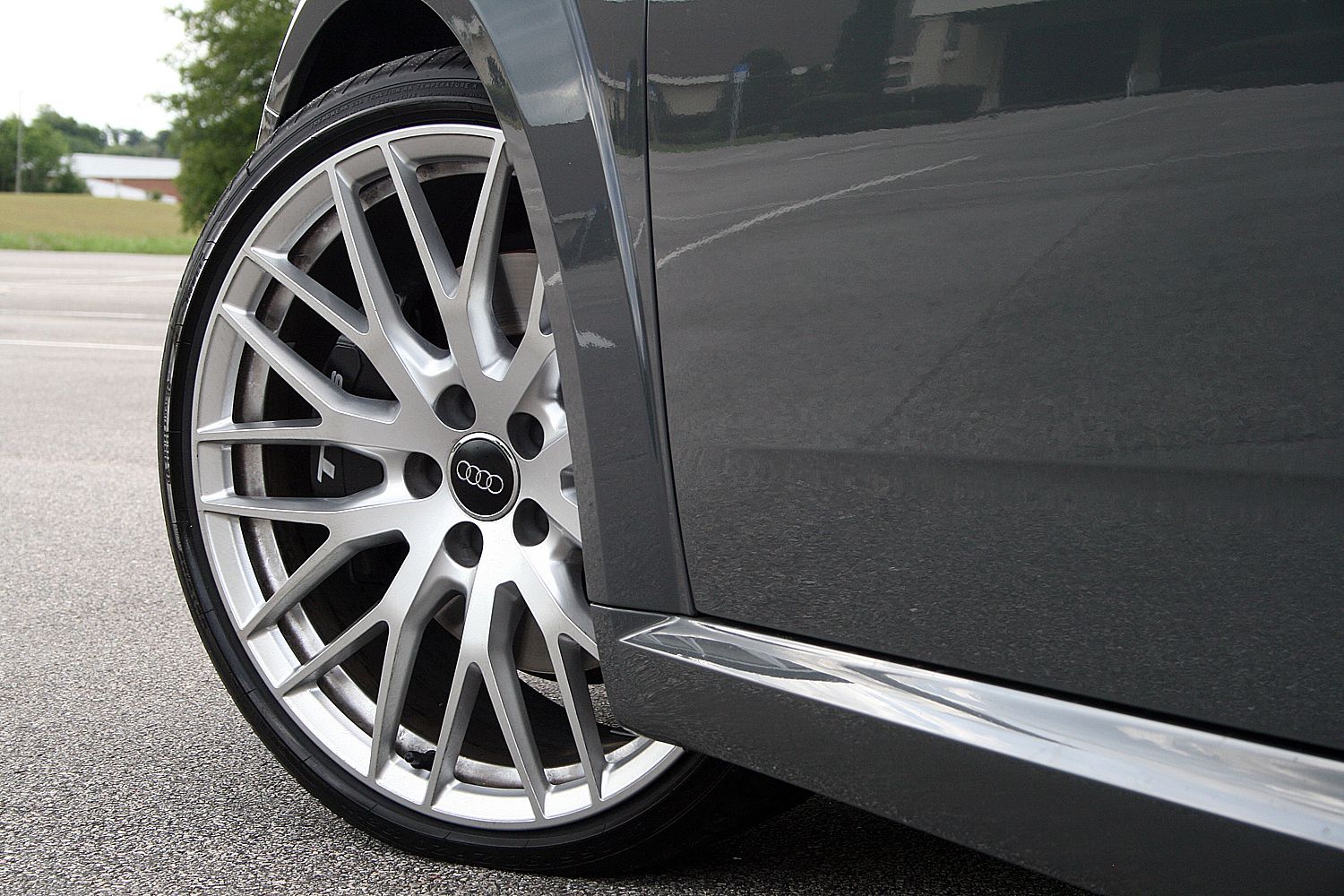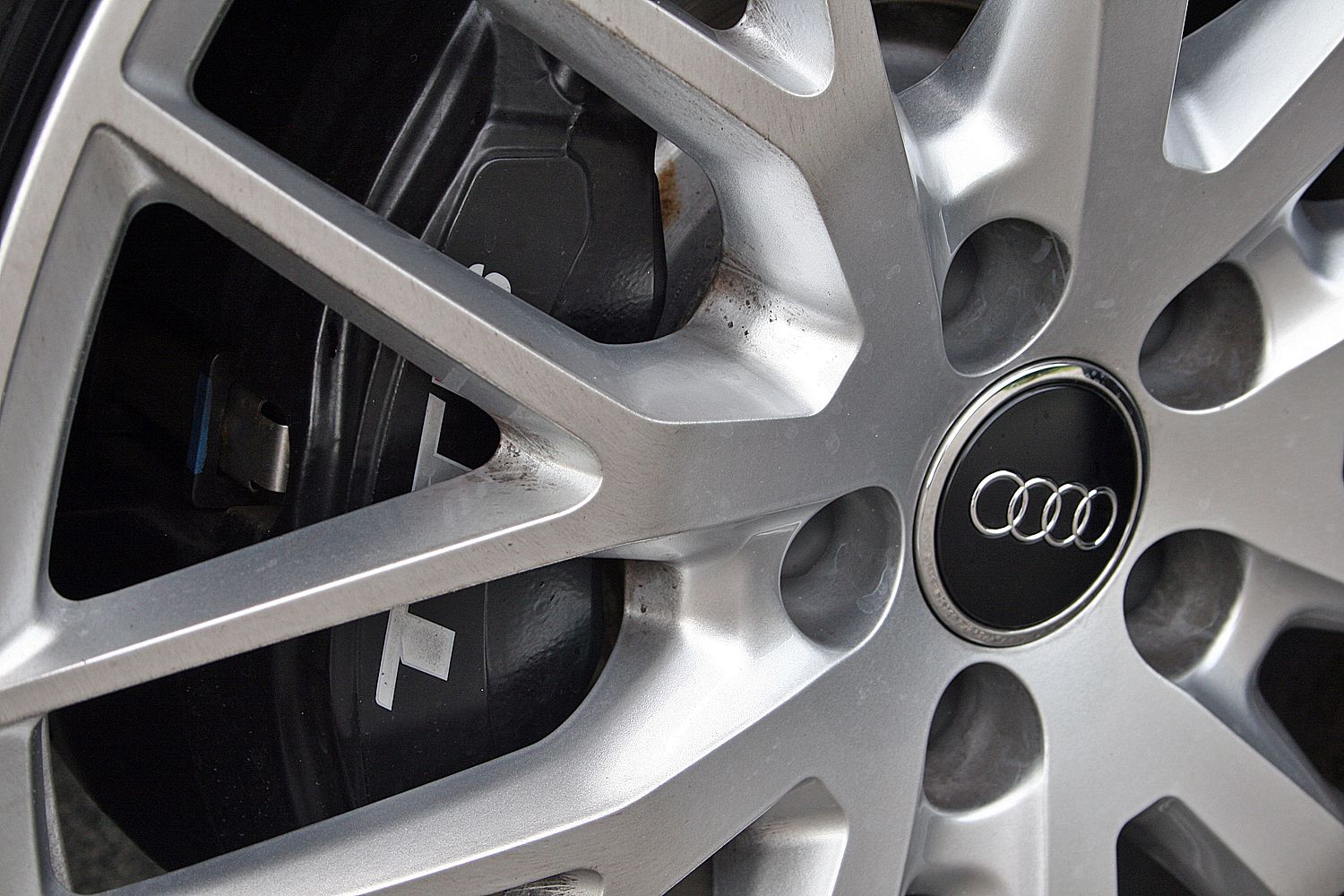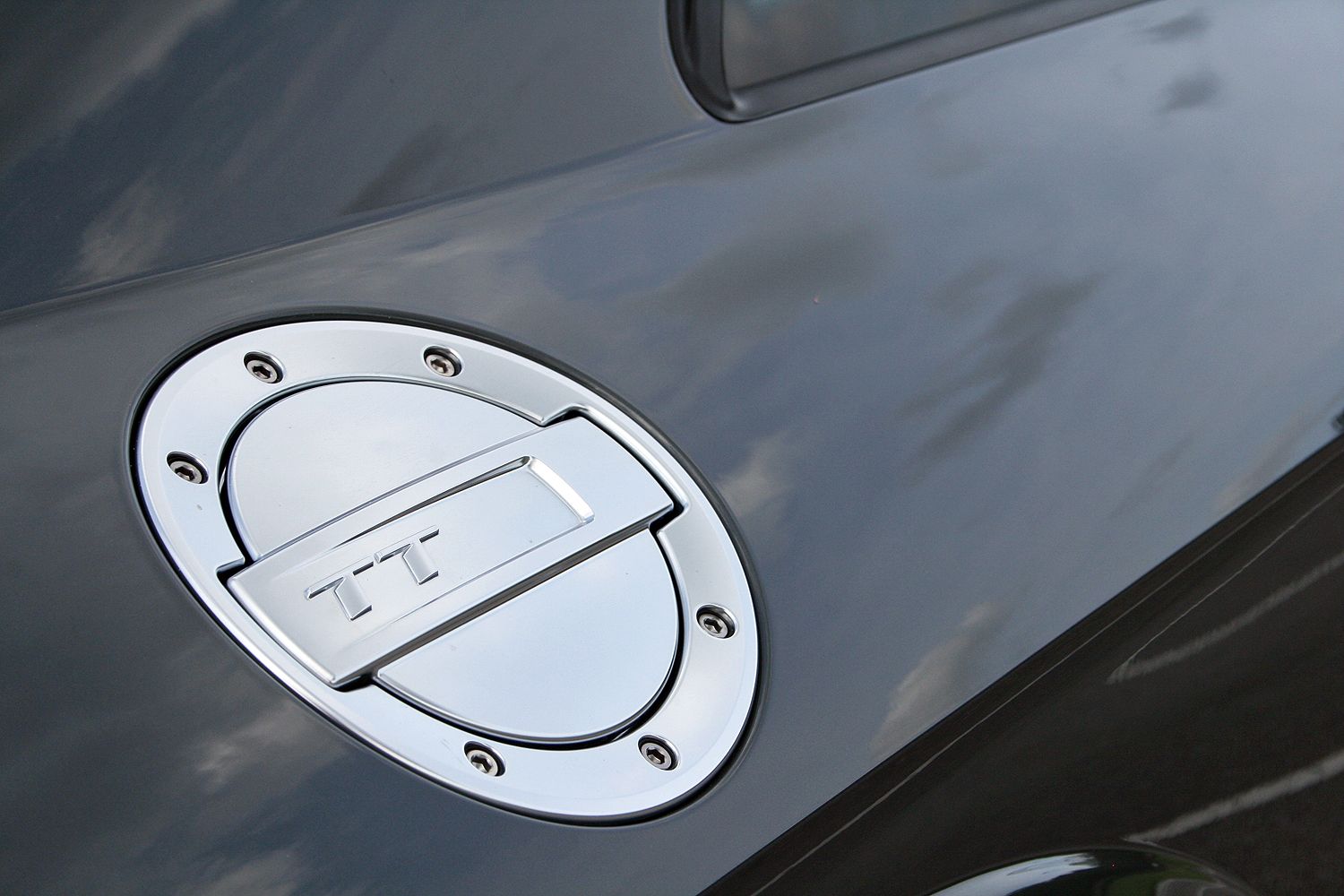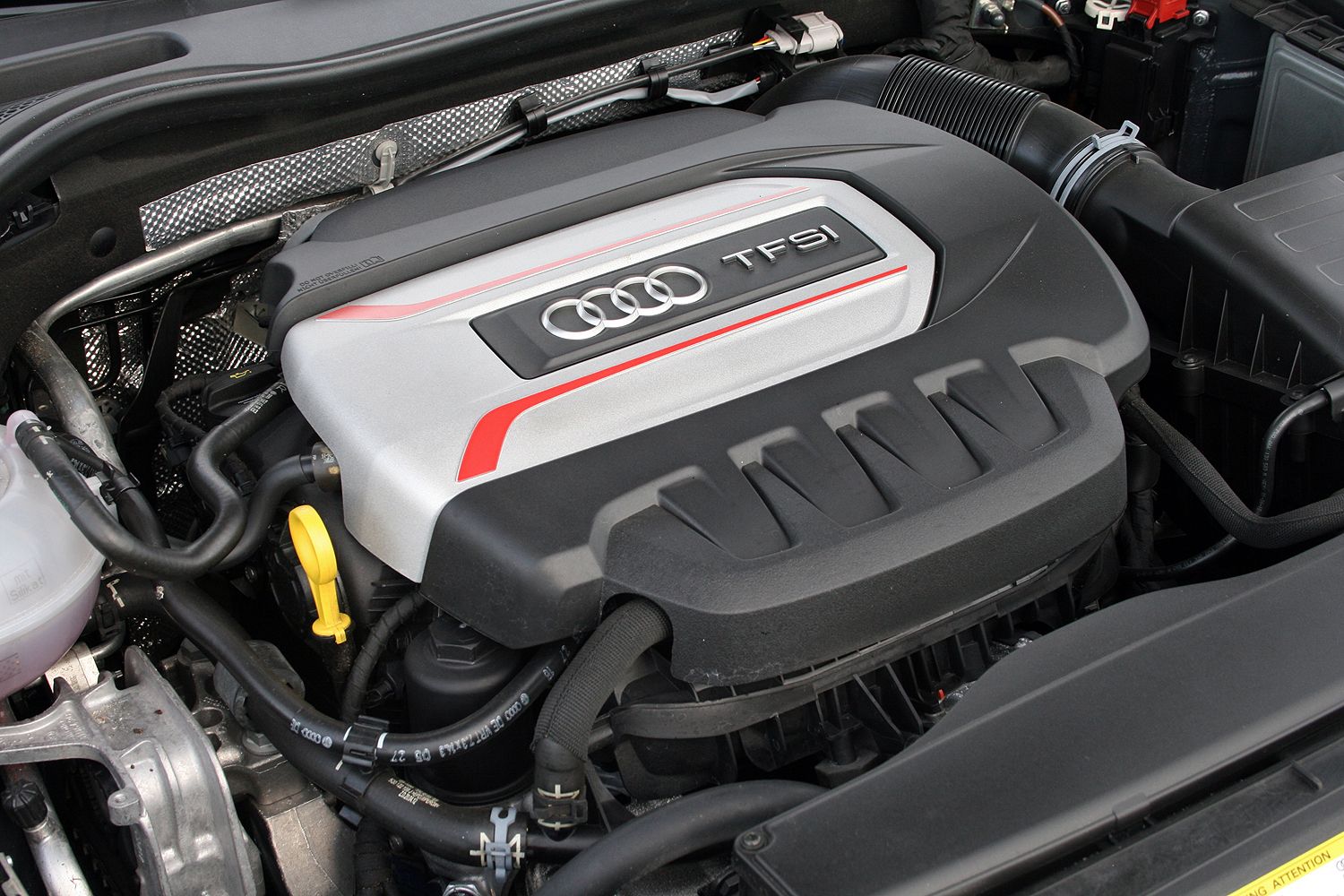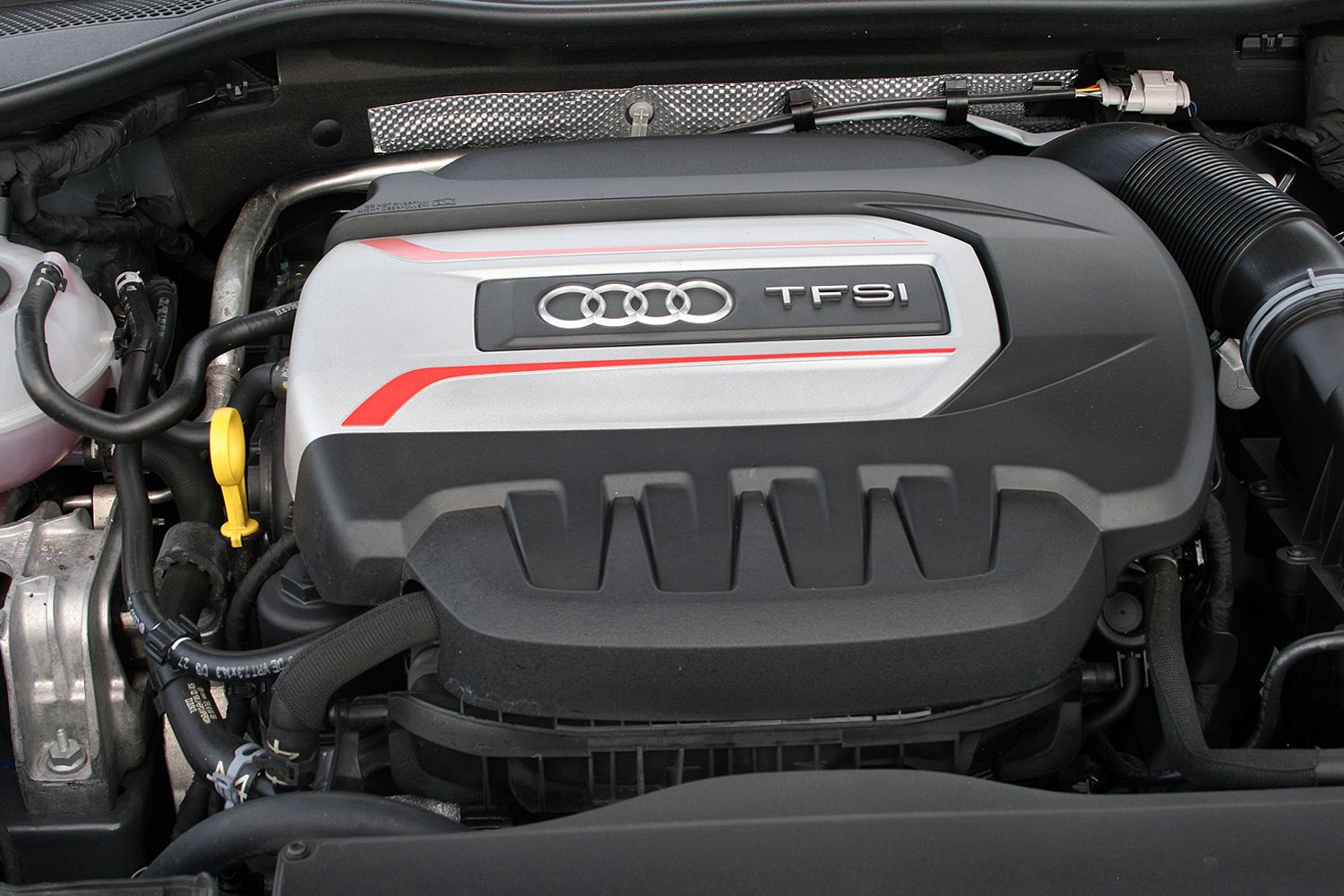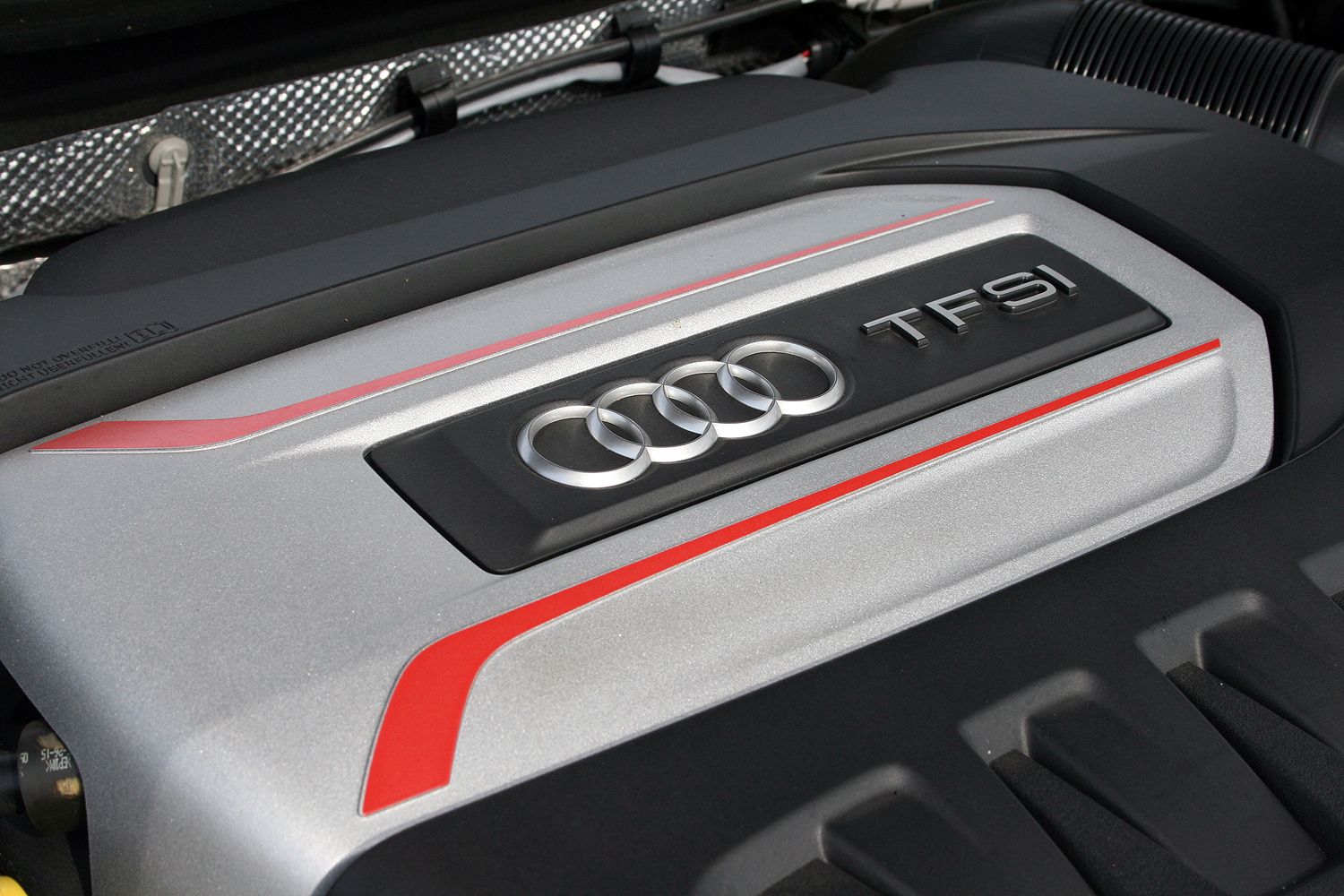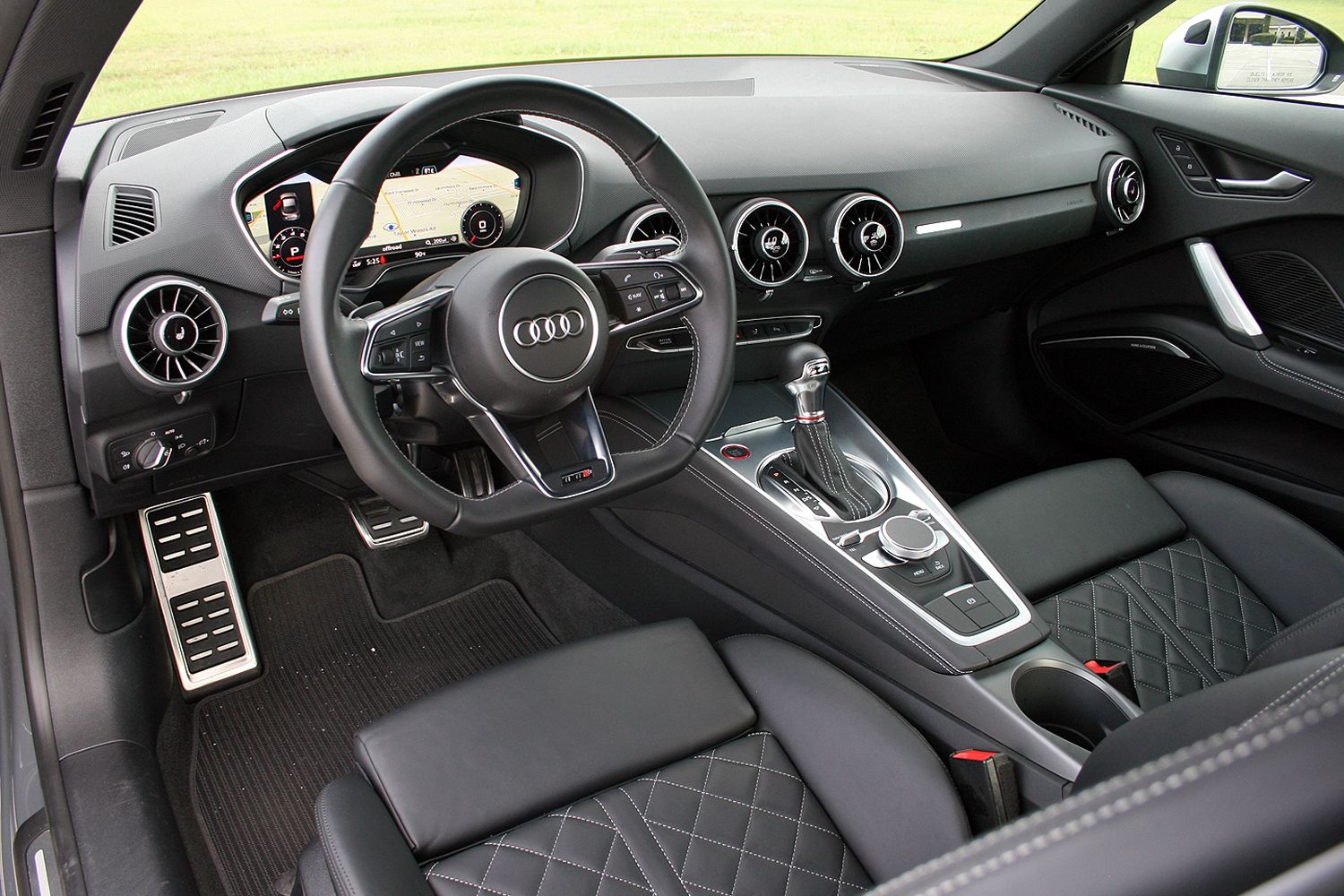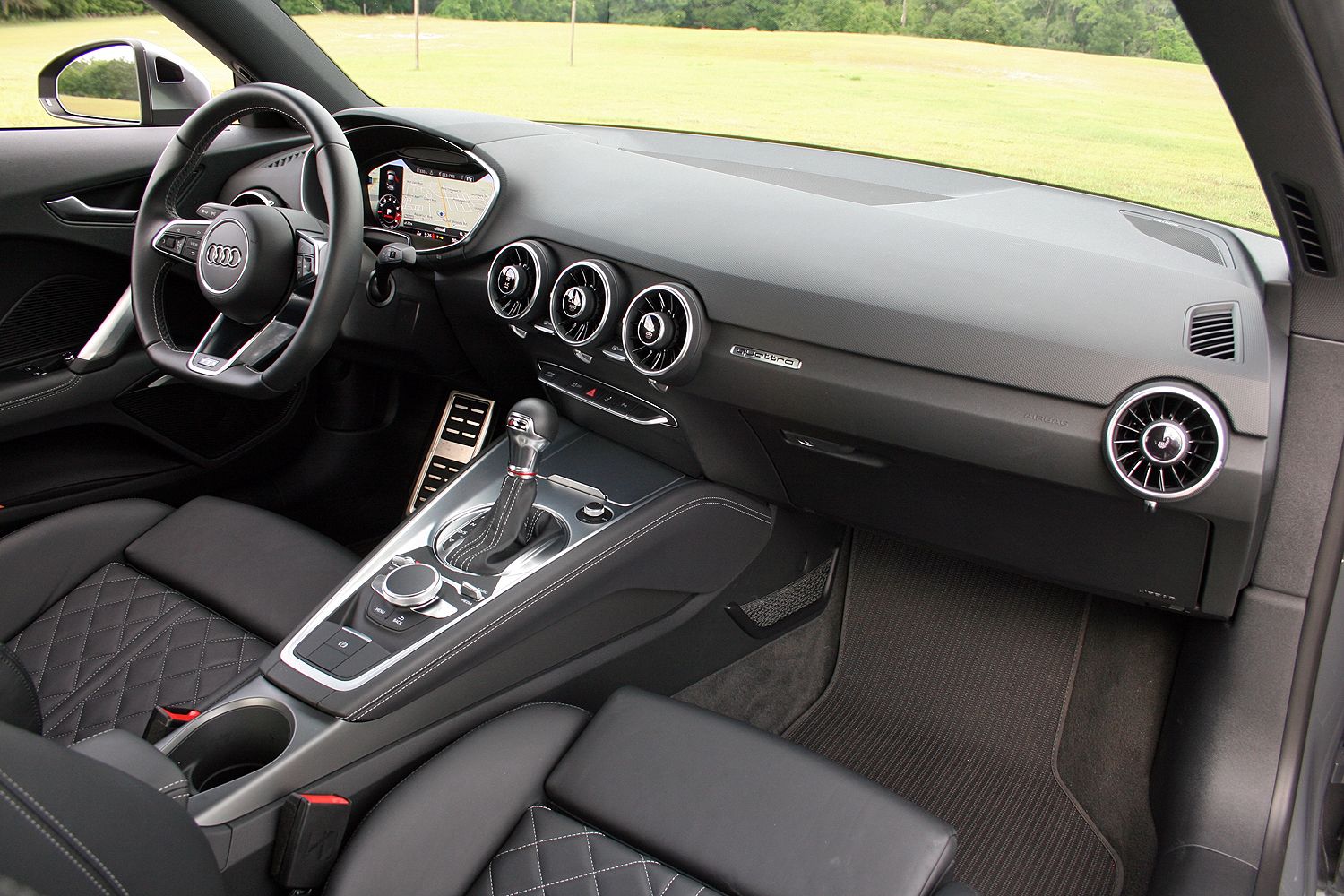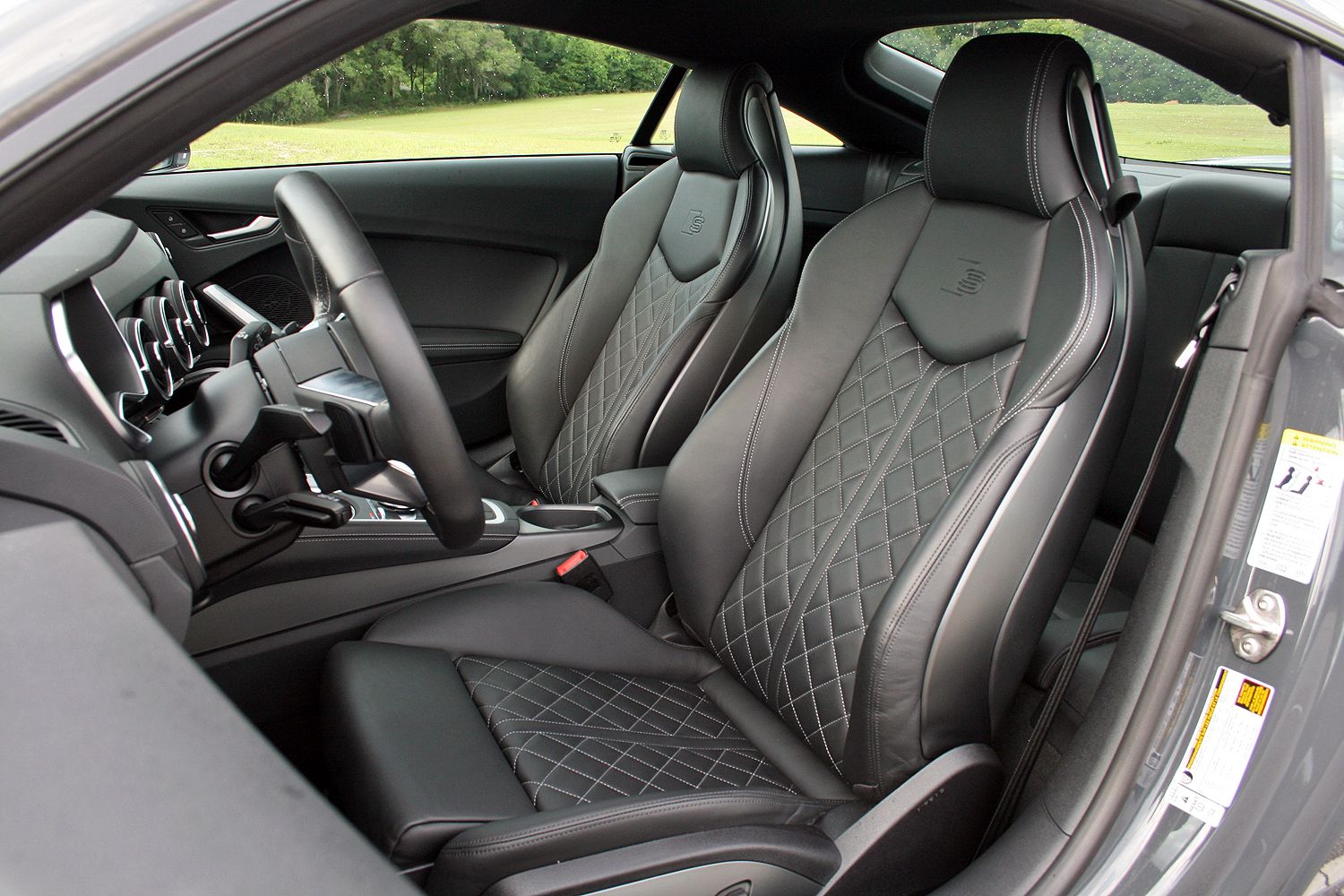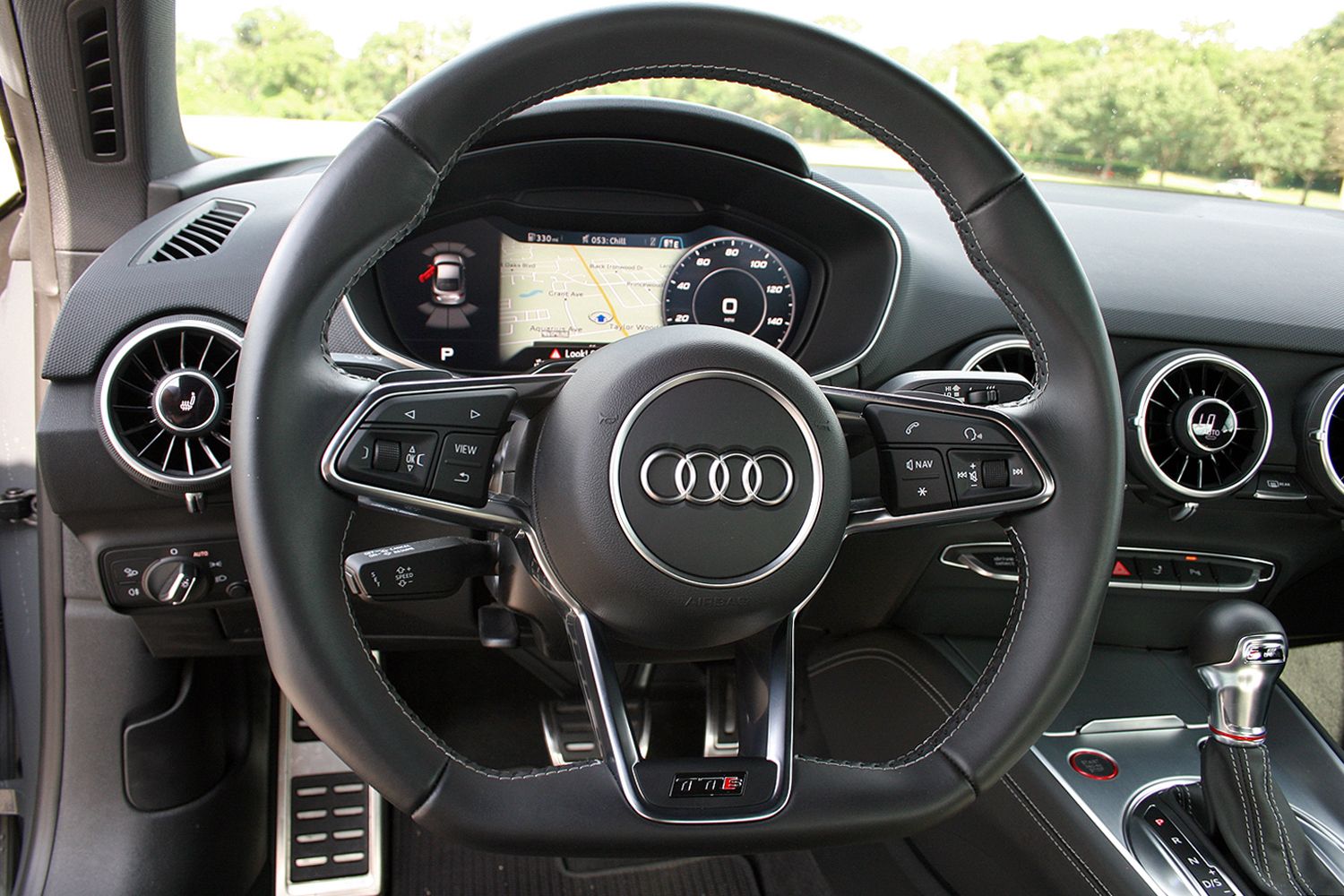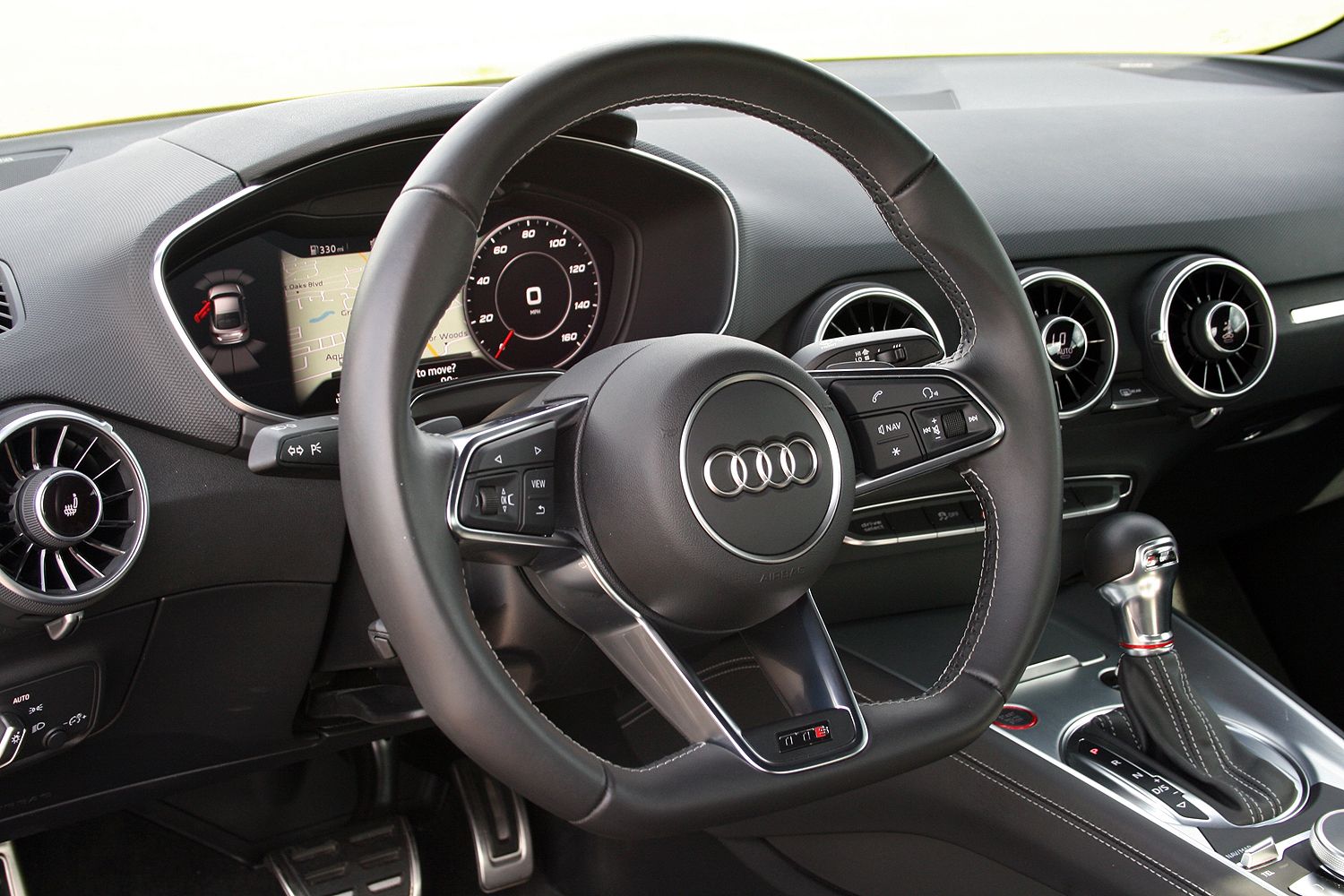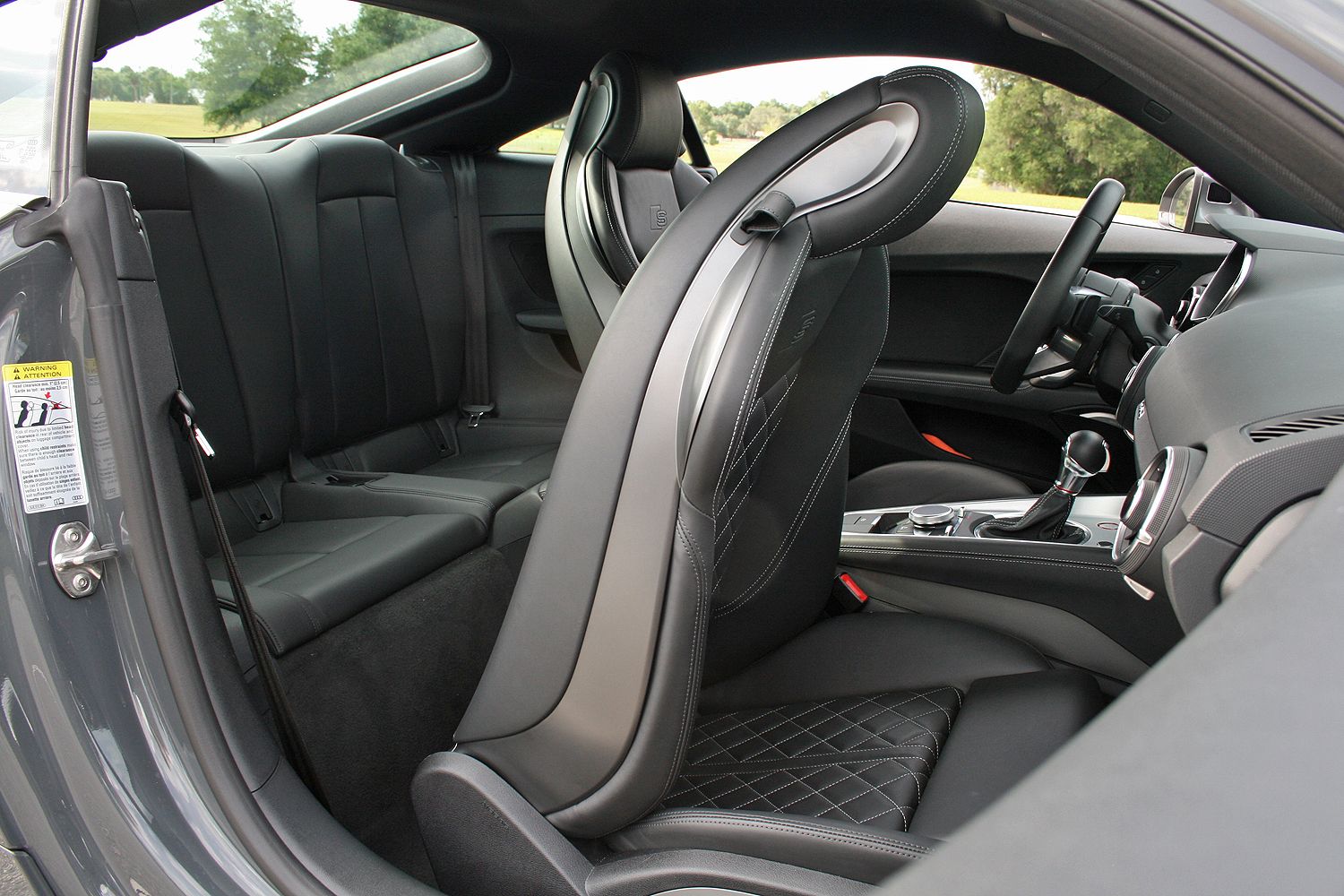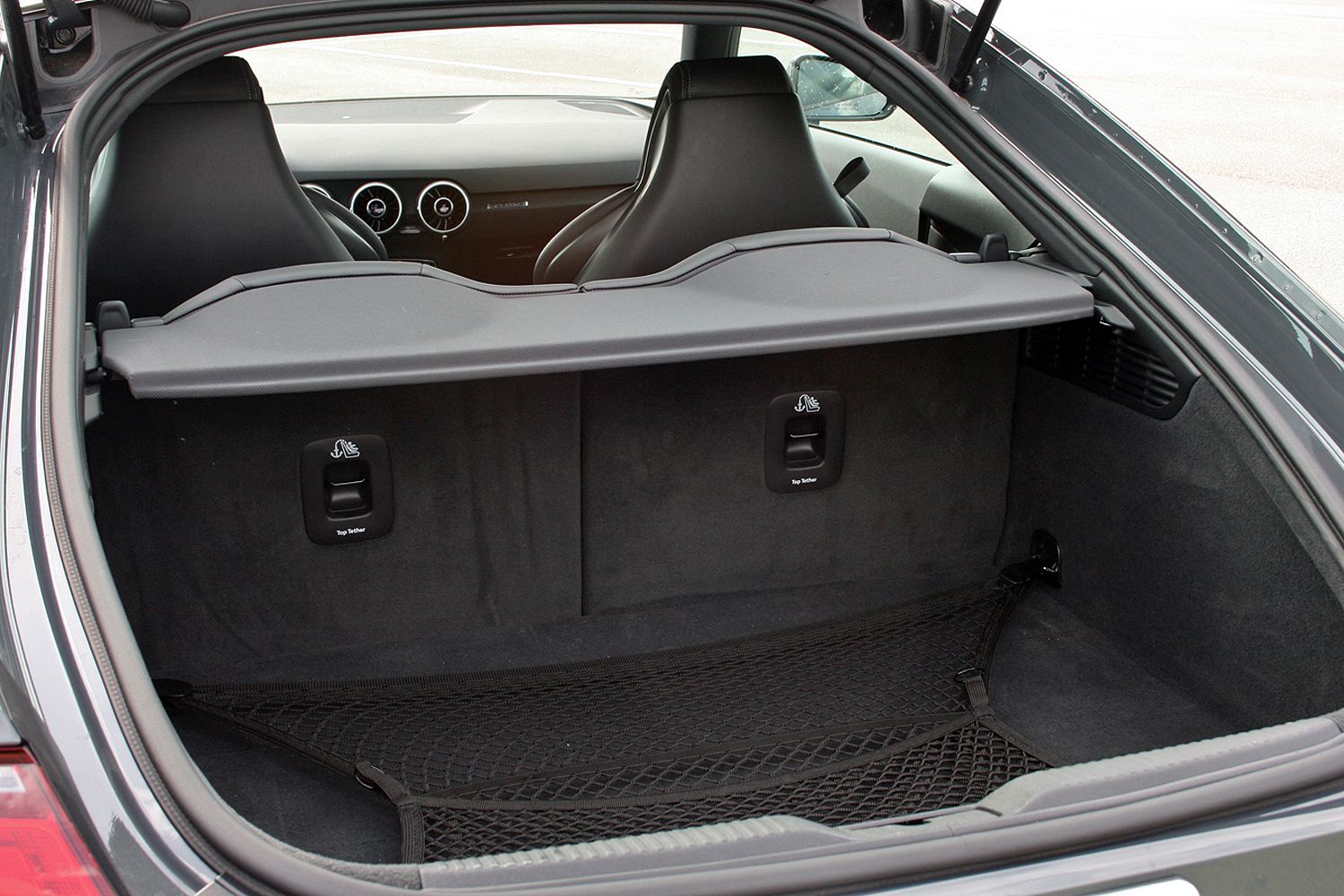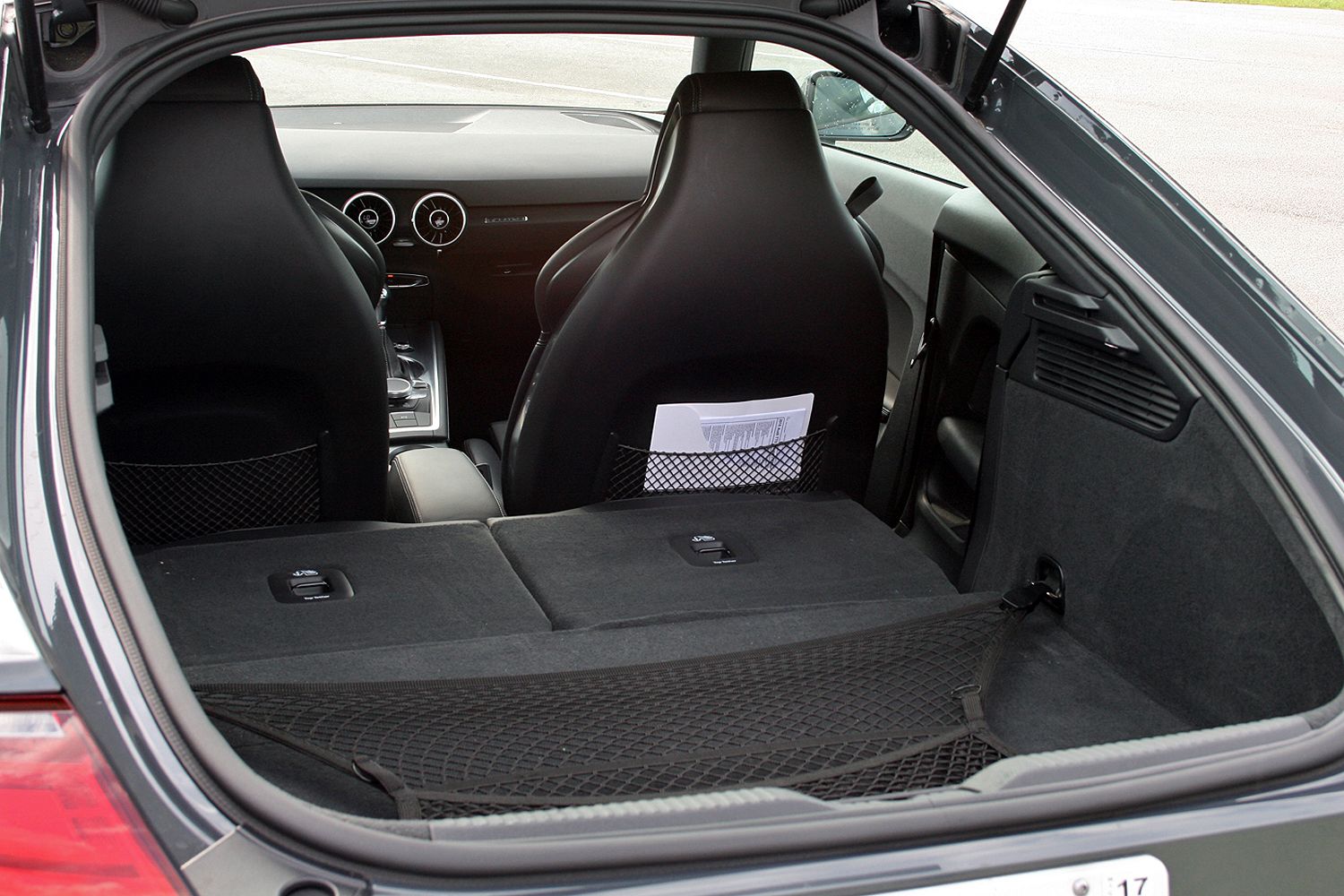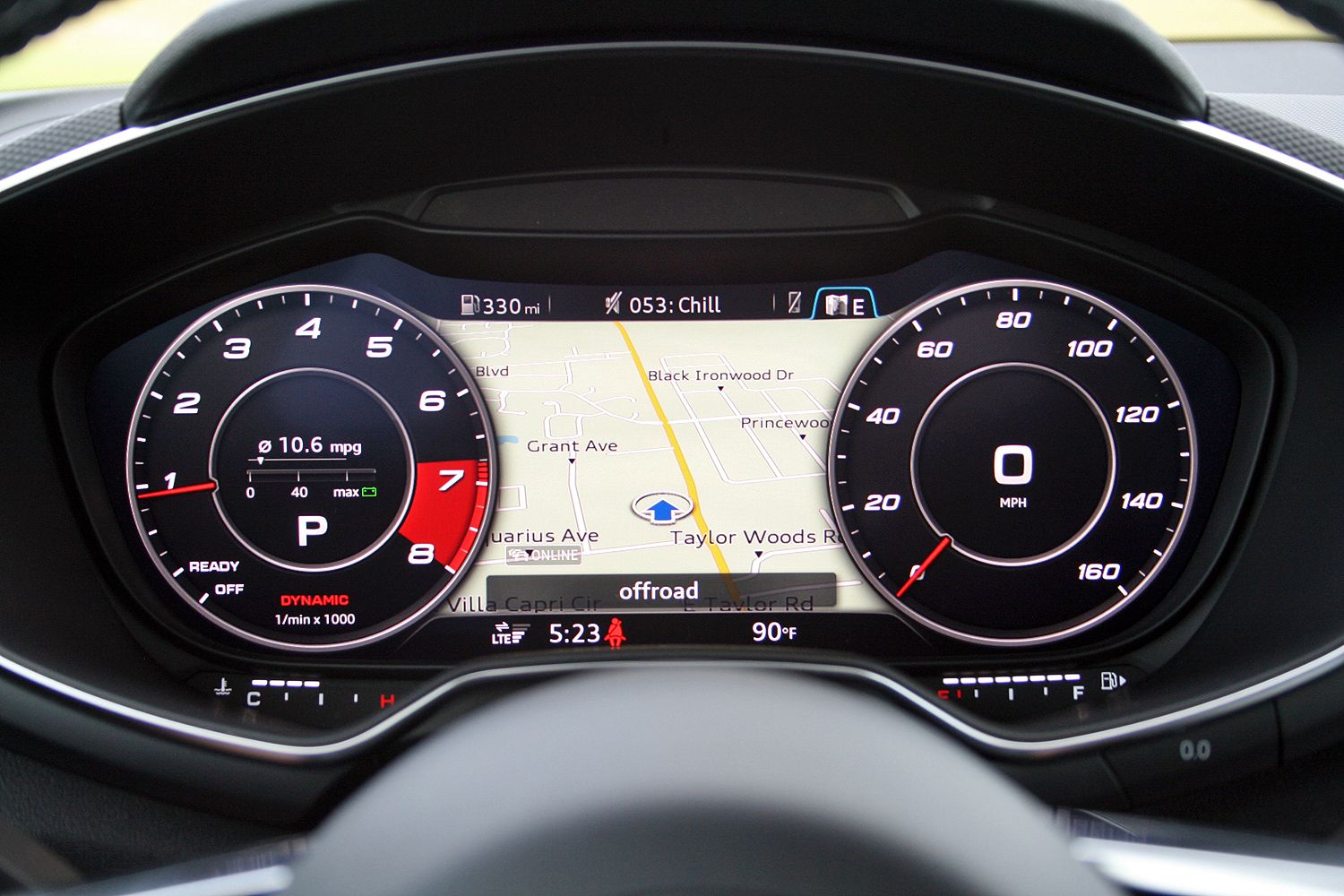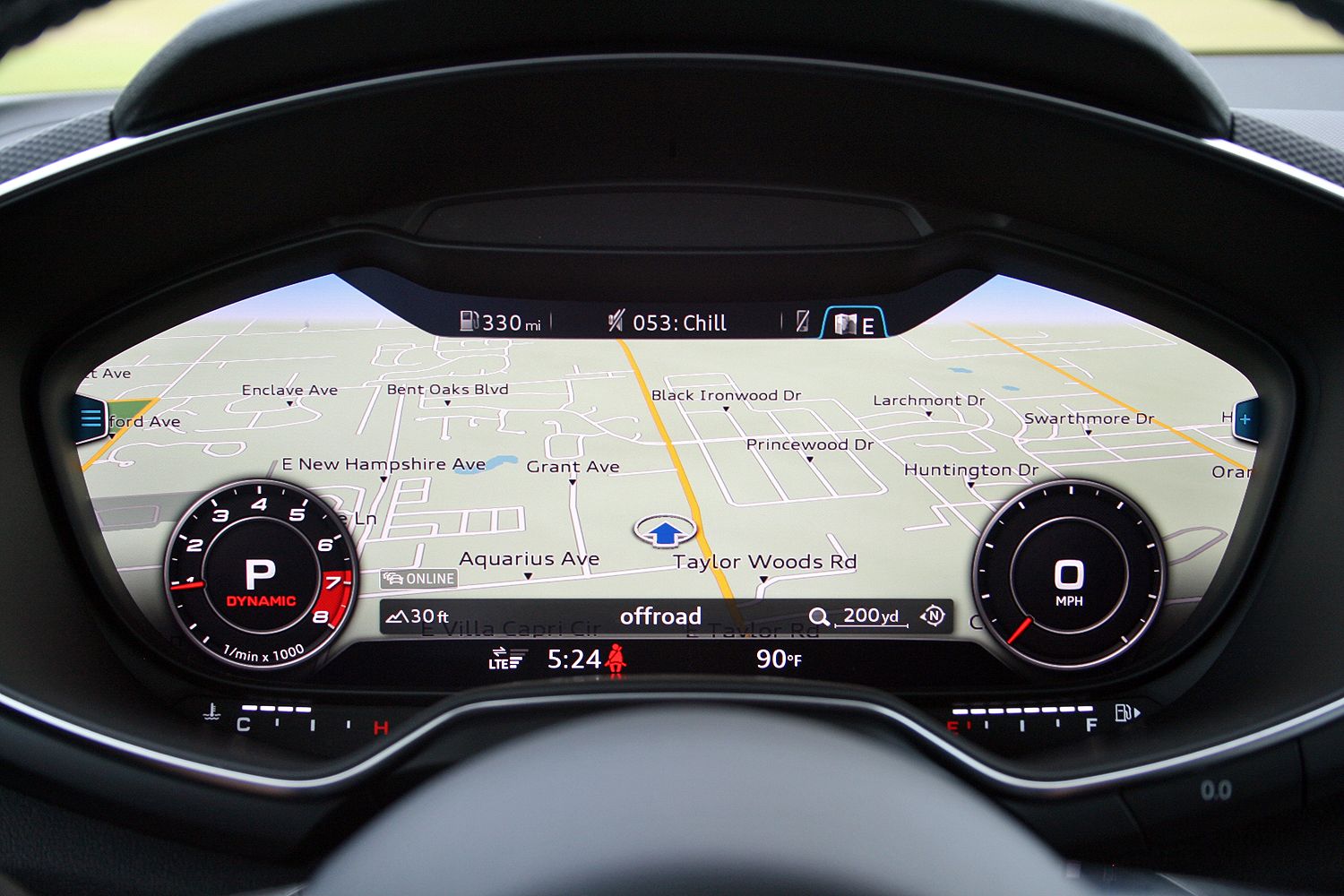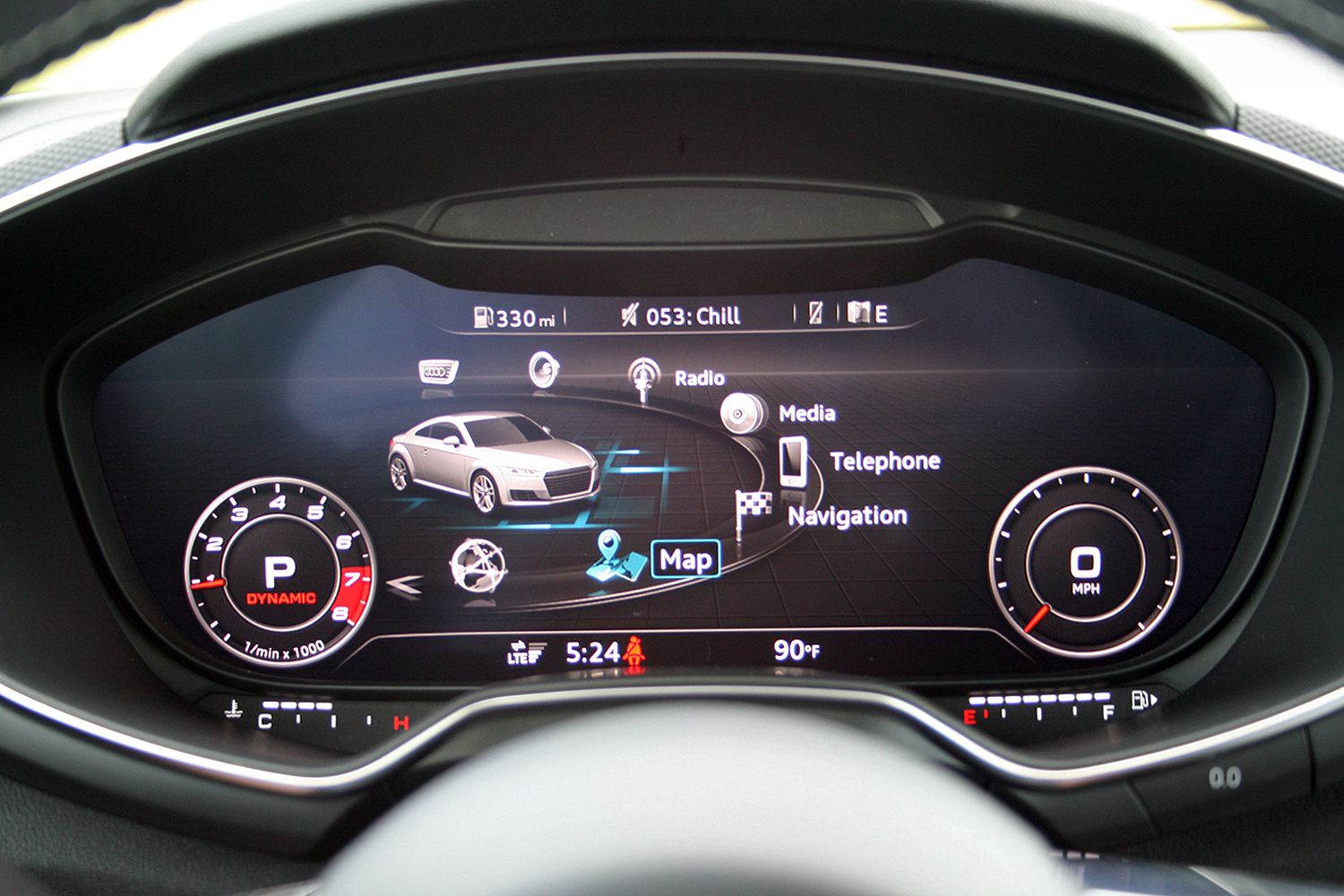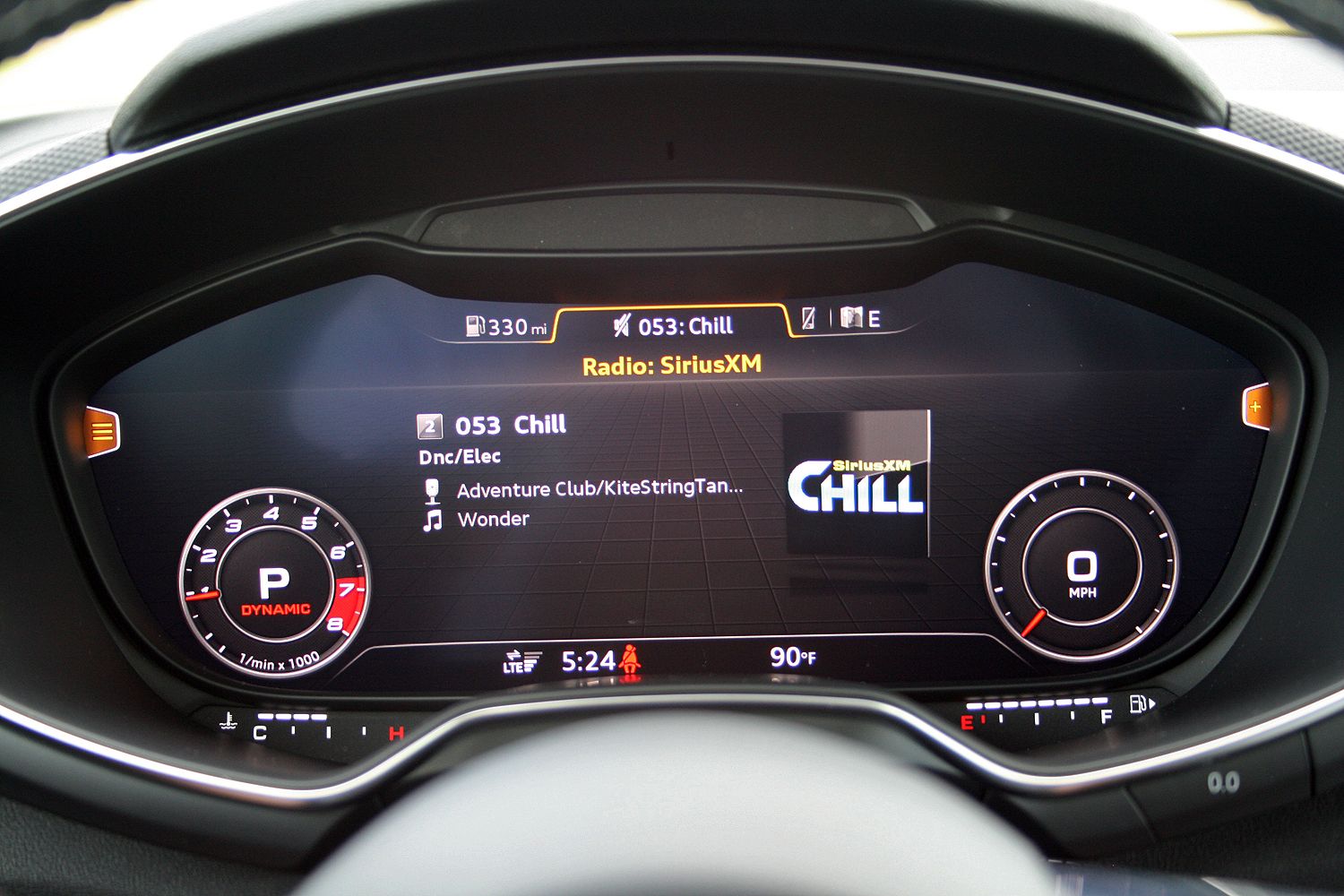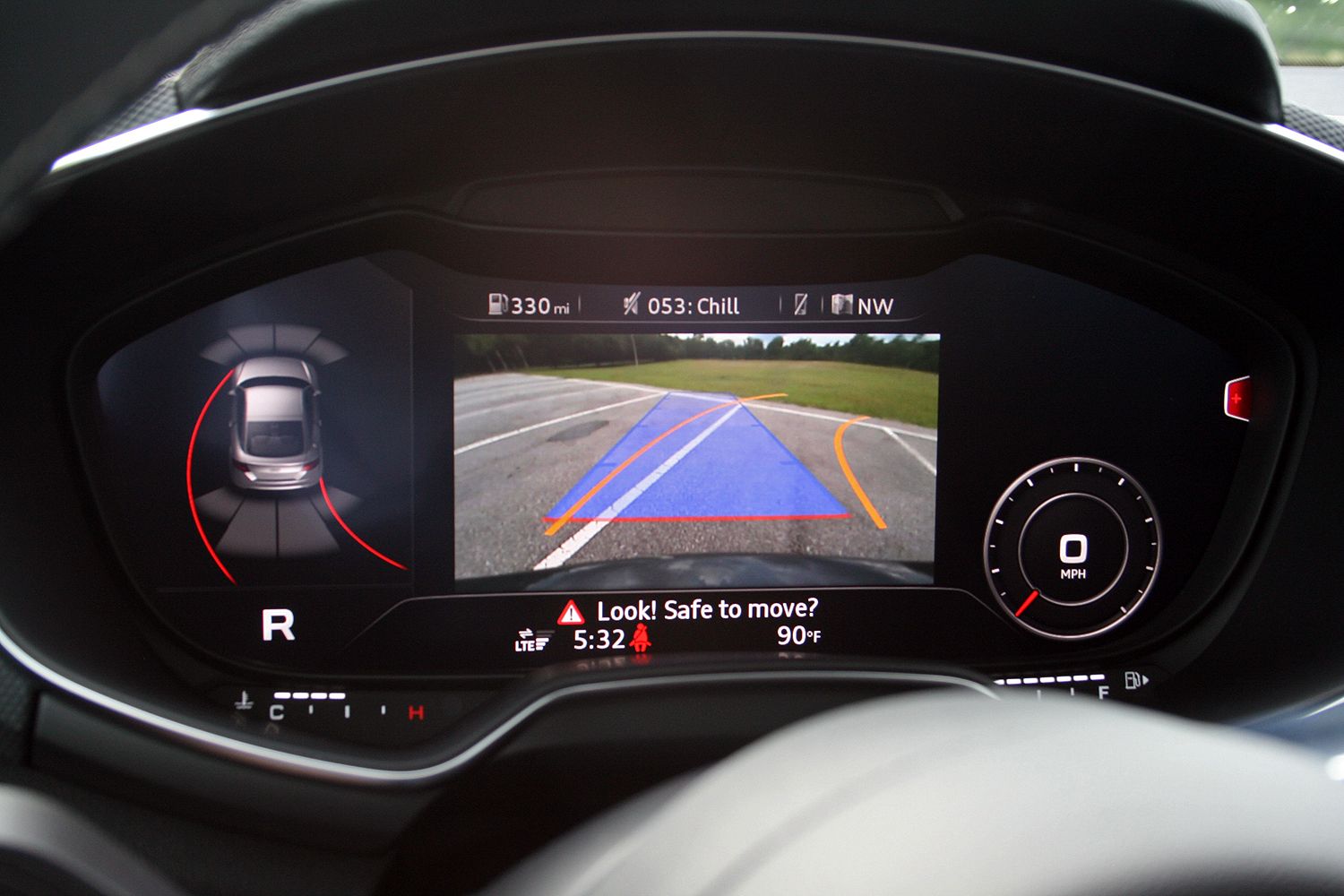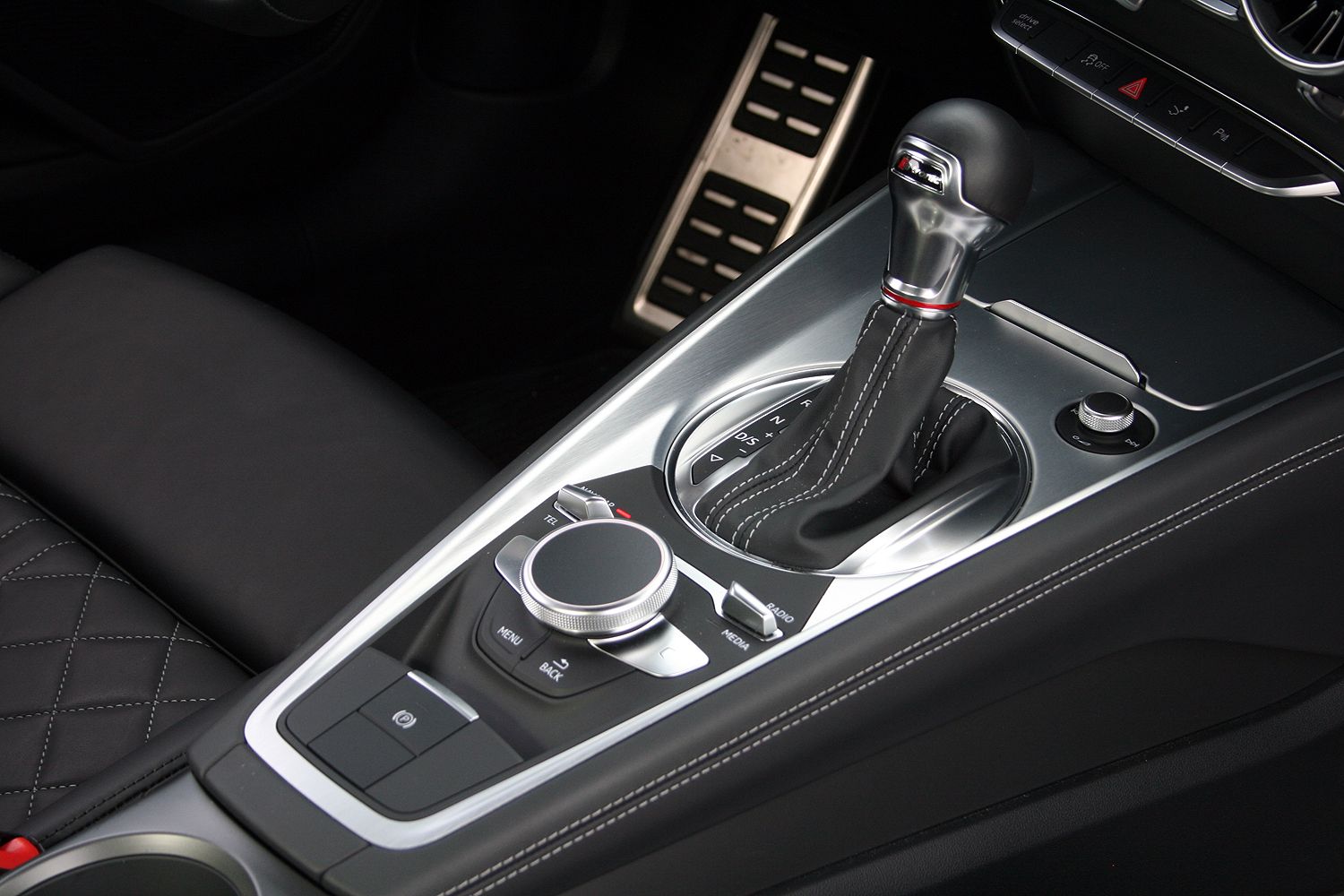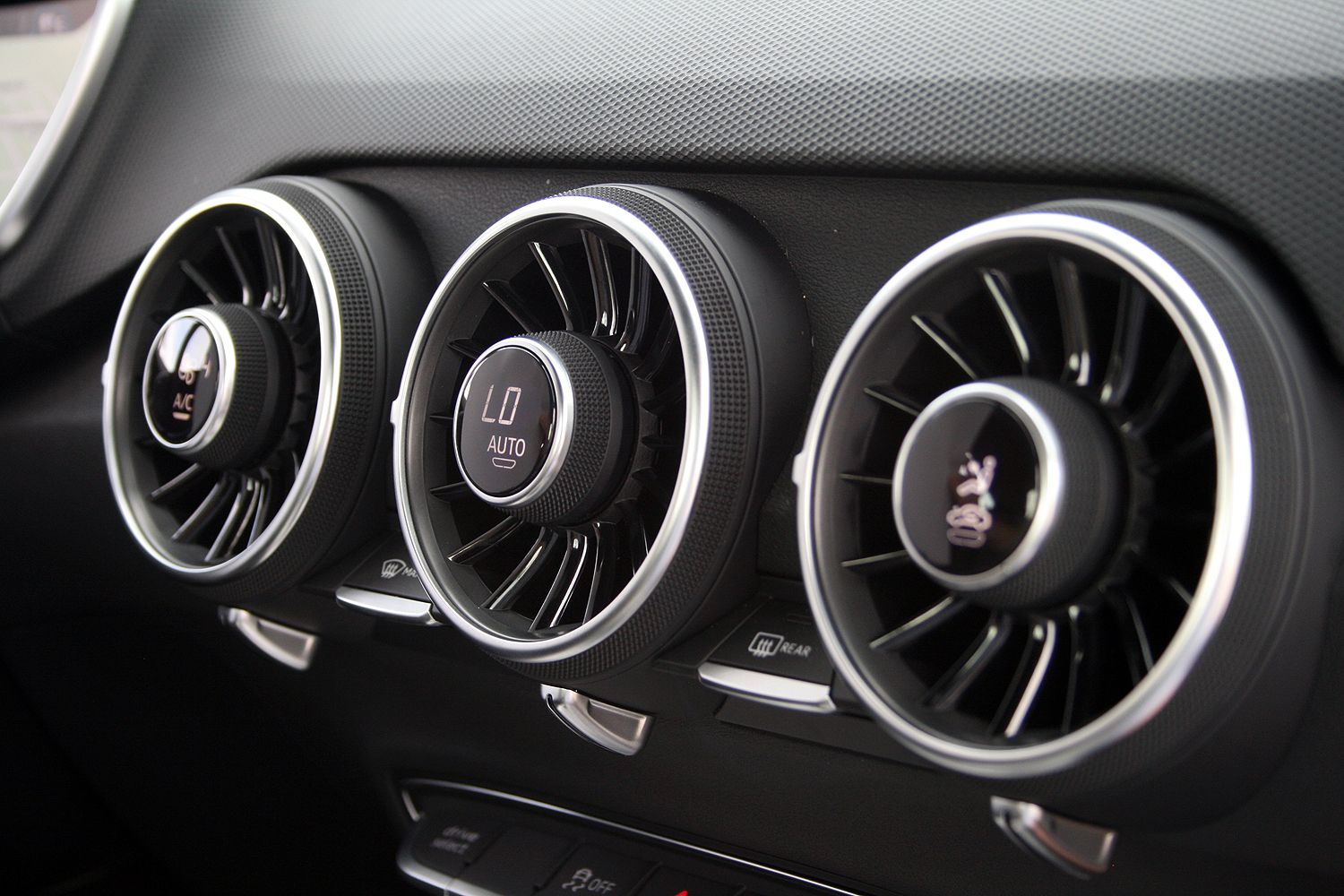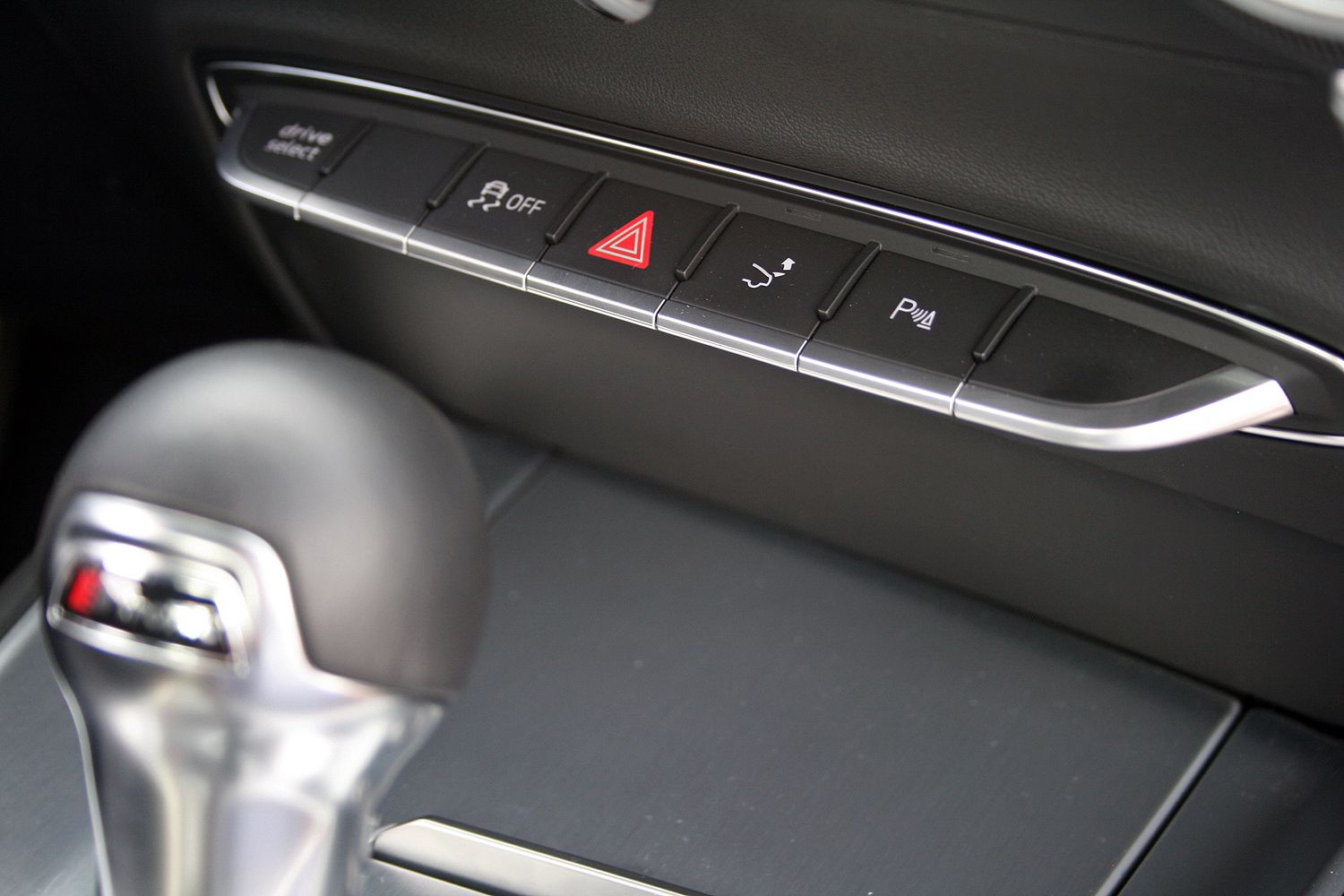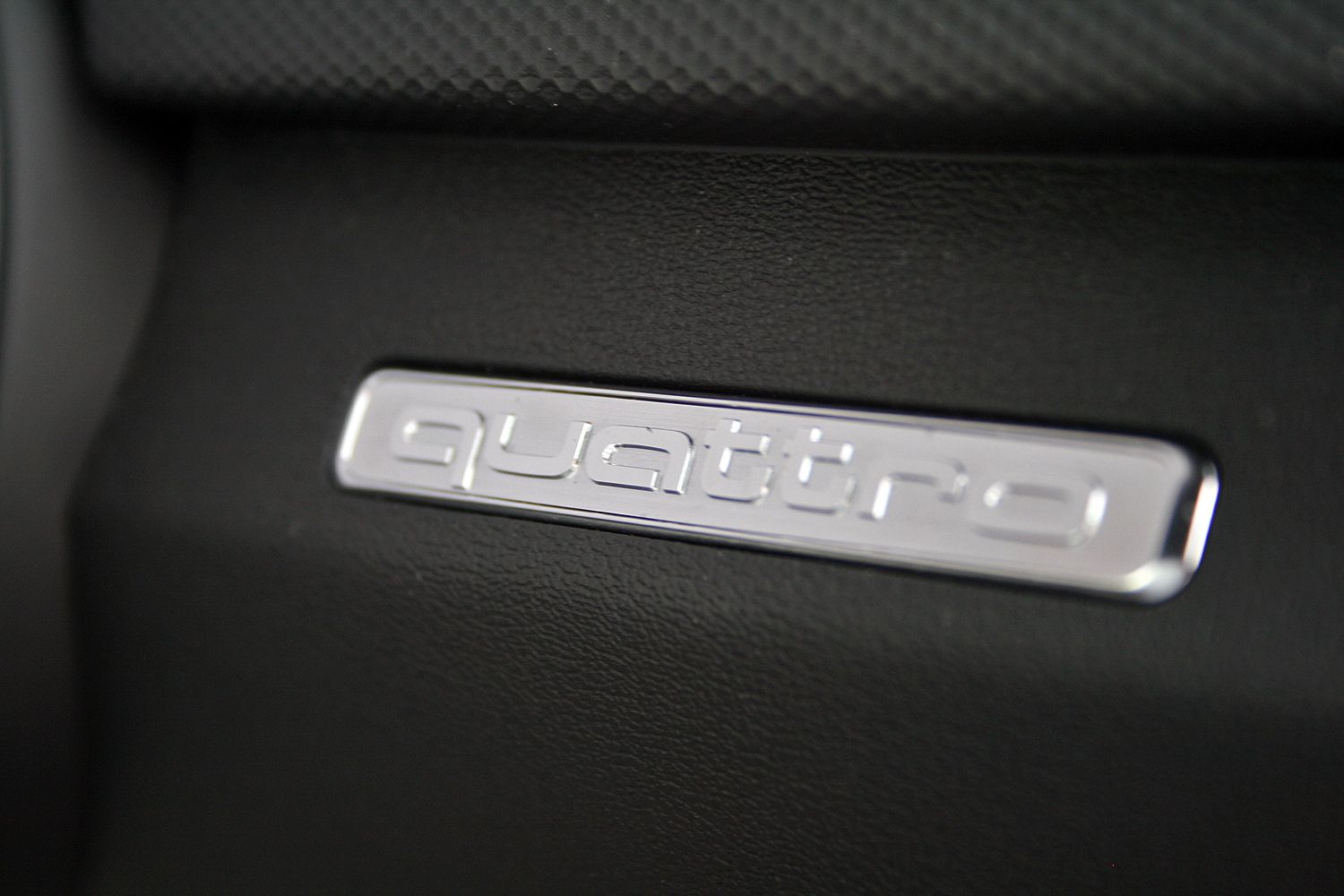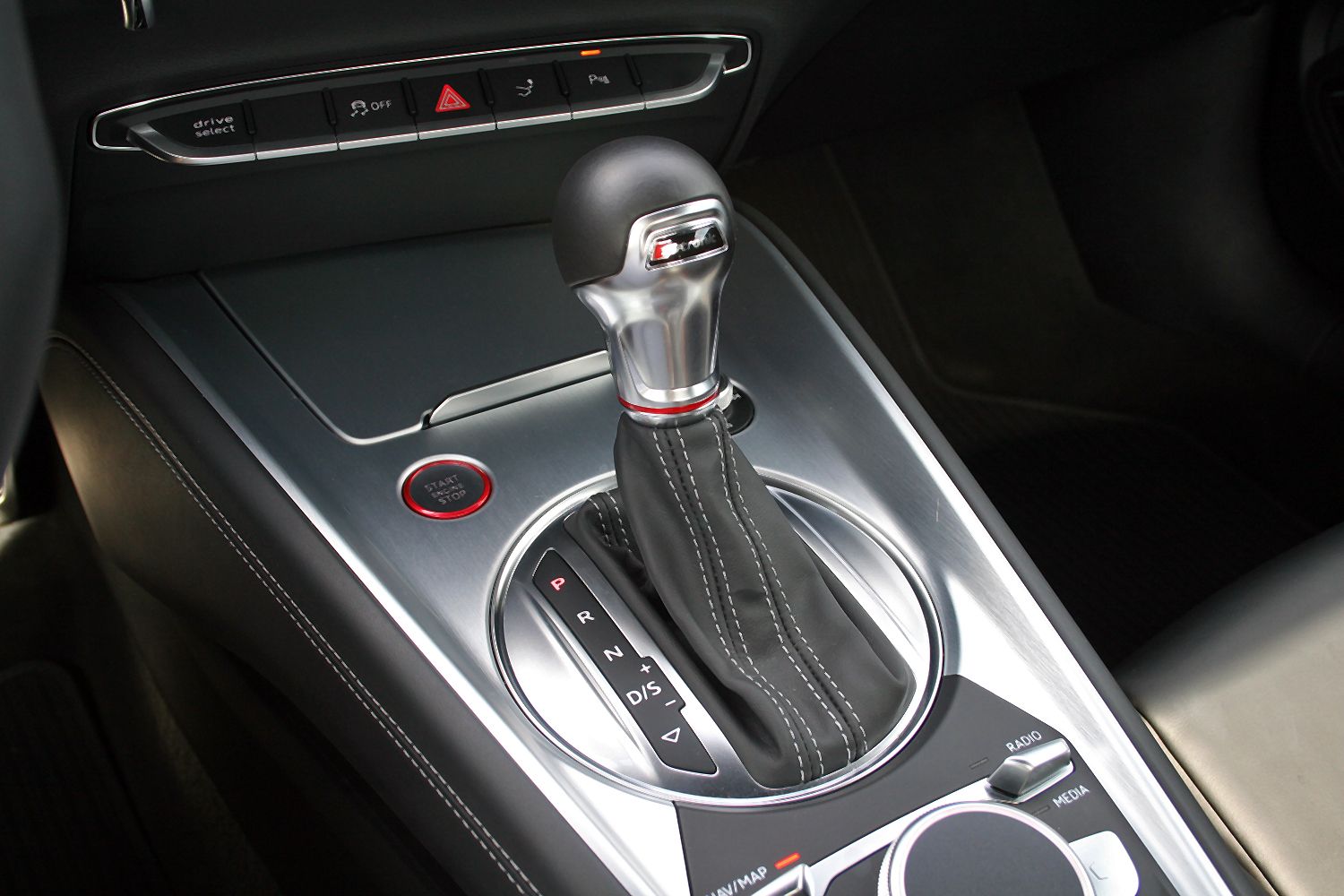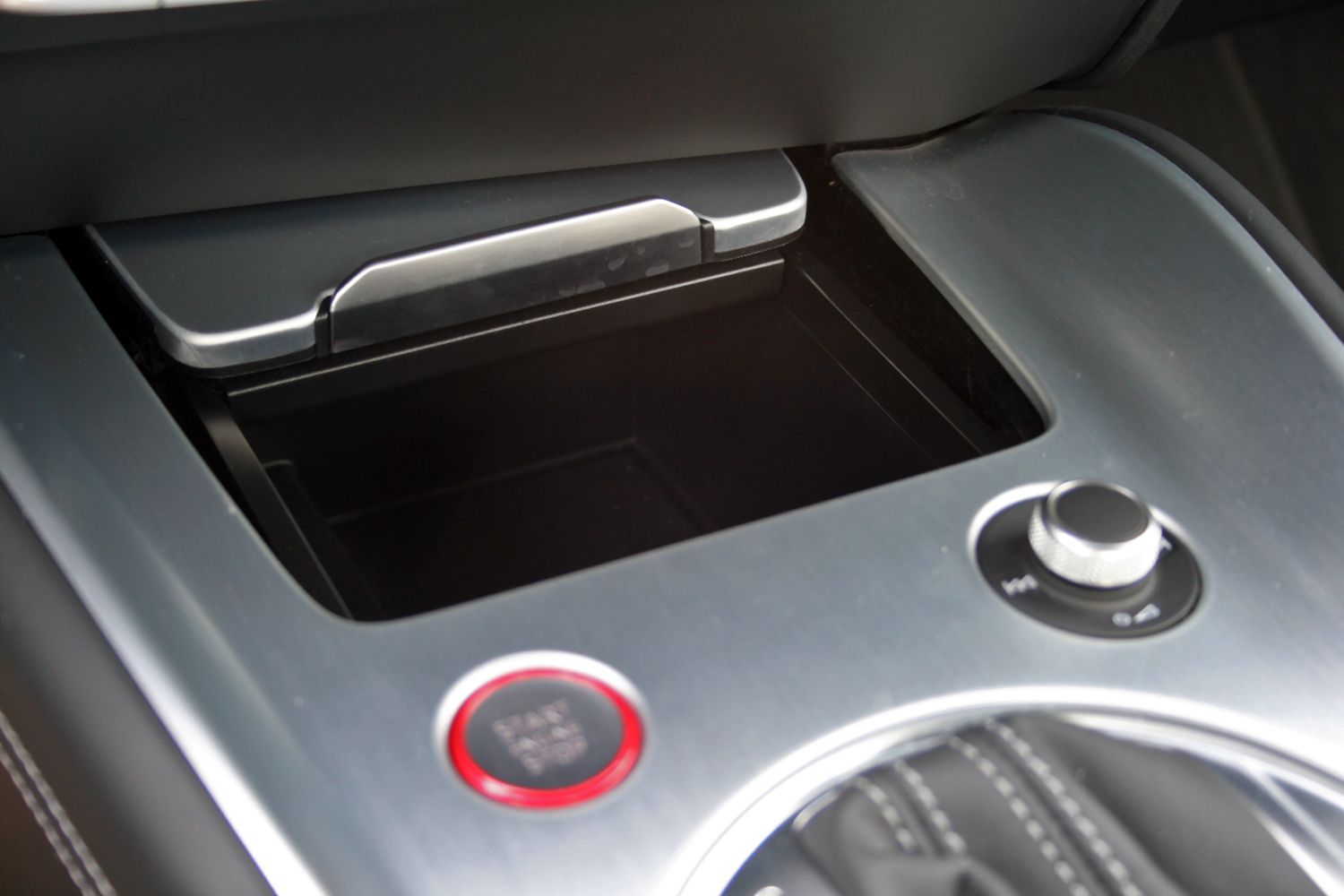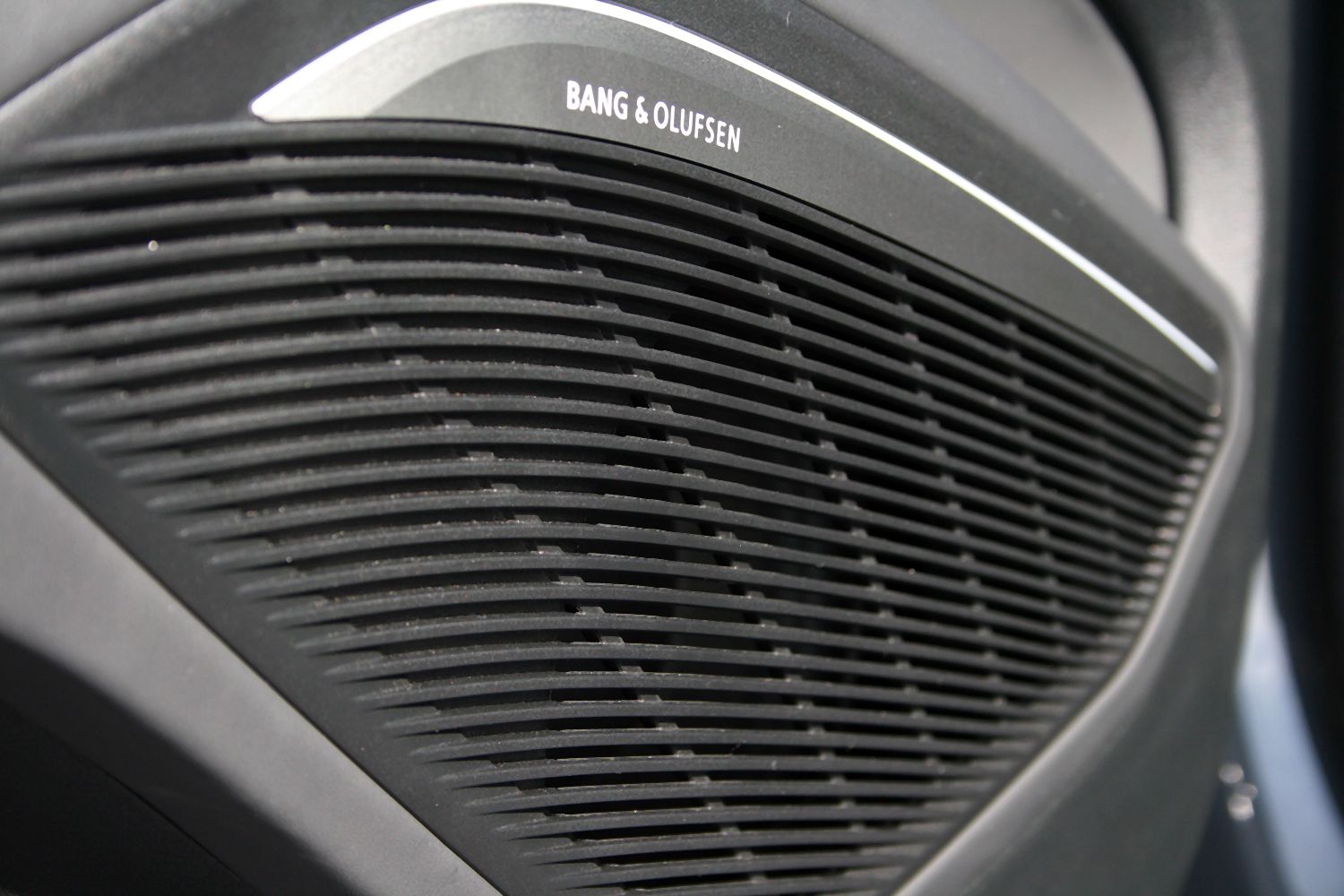It was 1998 when the TT rolled off the assembly line for the first time. Its cutesy, rounded, toy-like shape looked like another take on the New Beetle idea. It came from the same automaker, after all. But compared to the original, the all-new 2016 Audi TT is a stark contrast of sharp lines and purposeful curves. Its menacing appearance gives off a more masculine vibe that pairs well with its powerful drivetrain and fighter jet cockpit.
This change didn’t happen overnight, though. The gradual progression from round to ripped can be seen through the TT’s lineage. The generation that gaps the original and the 2016 model shows signs of a squared-off jaw line and manicured five o’clock shadow, though nowhere near as striking as this new third generation.
But it’s not just a fresh face that’s new. Audi swapped in the new MQB platform that underpins the A3 and Volkswagen Golf. Extensive thinning of extra weight and the addition of more power makes the TT a better performer. Audi says more than 110 pounds were dropped between the second and third generations. In addition, more power (292 horses and 280 pound-feet of torque, to be exact) make the 2016 TTS a proper 2+2 sports coupe.
I recently had the chance to sample the 2016 TTS for a week on my home turf in Central Florida. The hot weather was perfect for the Pirelli summer performance tires shod on the beautiful 20-inch alloy wheels. The heat might not have been ideal conditions for the 2.0-liter TFSI four-cylinder, but it didn’t seem to mind.
So what’s the Audi TTS like to live with? Keep reading to find out.
Continue reading for more information.
2016 Audi TTS Coupe – Driven
- Make: Array
- Model: 2016 Audi TTS Coupe – Driven
- Engine/Motor: inline-4
- Horsepower: 292 @ 6200
- Torque: 280 @ 1900
- Transmission: Six-speed dual clutch
- [do not use] Vehicle Model: Array
Video Review
Exterior
The TT’s new appearance is certainly more striking than before. Its angular accents and rounded edges move the coupe into modern times. It might look dated in a decade or so, but it’ll probably be a future classic from the mid 2010s that embodied the current design trends.
Up front, the TTS wears Audi’s six-sided grille rather well. Large air intakes direct air into intercoolers and to the front brakes. The angular headlights are fully LED, including the high beams and turn signals. And that chrome Audi badge sits pretty at the cusp of the curved hood, proudly displaying the car’s family brand.
Round fender flares contrast the sharp body lines running rearward, while accenting the beautiful 20-inch bright alloy wheels. Satin chrome mirror caps help add attention to the TT’s beltline, too. In profile, the TT’s roof line peaks just ahead of the front passengers. It quickly sweeps downward, ending just inches from the back of the car. This does leave room for the active rear spoiler – a feature car nears tend to love and cops use as a “hey, I’m speeding” flag.
The brightwork seen up front continues at the TTS’ rear. A chrome trim ring accents the lower diffuser and tips the quad exhaust pipes. The fuel door is also capped in chrome – a cosmetic touch seen on every TT model.
All told, the exterior is clean, simple, yet detailed. It’s a smooth design that echoes modern Volkswagen and Audi themes.
Interior
Audi’s modernist theme is on fully display inside the TTS. The minimalistic dashboard is a welcomed departure from the button-laden cockpits of many current cars. The look helps emphasis the driving experience. There’s no hokey infotainment screen rising from the dash or joystick controllers to fumble over. Yet despite the absence of these things, the TTS still offers a full infotainment system and hand controller with touch inputs. Audi just does it with a higher level of integration.
The infotainment system is fully integrated into the gauge cluster, replacing every analog gauge for a massive “virtual cockpit.” The screen is configurable with various pages and viewing options. Controls for the screen are split between the steering wheel’s left bank of buttons and the main rotary dial and toggle switches on the center console. It only takes a short time to become familiar with the system and how it operates, making it easy for Audi newbies to grasp the concept.
The system allows for a full map viewing as well, making it easy to navigate a labyrinth of new roads like following a maze. Better yet, Google provides the mapping, so the graphics are stunningly clear and information is accurate. When driving is the main event, the speedometer and tachometer grow large, taking up most of the screen. The gear position is also shown large, making it easy to keep track of manually shifting the six-speed dual-clutch.
Other interesting controls include the HVAC system. Small dials in the center of the air vents control fan speed, temperature, and direction. The two outboard air vents feature buttons for the heated seats. This setup works extremely well and the displays are easy to read. The only problem is the lack of dual zone temperature controls.
The center console maintains the clutter-free design. A hidden storage compartment lies ahead of the gear shifter for small items like coins or gum. The shifter itself is wrapped in leather boot with French stitching and real metal trim. Below that is Audi’s main MMI controller. The rotary knob not only acts as a selector for the infotainment system, but its surface reads finger gestures, allowing users to write letters and numbers. This makes entering an address into the navigation system a breeze. It’s so intuitive, in fact, that without reading the manual or seeing anyone use the system previously, I was able to figure out swiping left and right acts as backspace and space functions. It’s left me jaded to all other forms of keying in an address. Well, save for voice inputs. I hope this technology finds its way into the entire industry.
Beyond the controls, the cockpit as a whole is impressive. The TTS’ sport seats offer fantastic support and plenty of adjustability. Not only that, but they look amazing. Some F-35 fighter jets are probably missing their seats. Comfort levels are high and there is plenty of room for average sized adults.
The rear seats, however, are a completely different story. At five-foot, six-inches, I’m not a tall guy. Still, my head hits the rear glass and I’m forced to either slouch or tilt my head. Nether are comfortable. Slouching pushes my knees into the seatbacks and tilting my head, well, that would make the saltiest of sailors seasick after a couple of miles. What’s more, the seatbacks actually lean forward. In all fairness, my four-year-old’s booster seat does fit, though it does push my wife’s seat close to the dash. An interesting tidbit: there are several caution labels around the car warning the rear hatch can cause injury to taller rear passengers should it be closed on their heads.
Just know the rear seats should be left for coats and gym bags. Kids can manage short trips, too.
Drivetrain
Powering the 2016 Audi TTS is the familiar 2.0-liter TFSI turbocharged four-cylinder. Compared to the standard TT, the TTS makes 72 horsepower and 22 pound-feet more, resulting in a total of 292 horses and 280 pound-feet. Peak torque kicks in at only 1,900 rpm and lasts until 5,300 rpm, making this a torquey little beast. Wringing the most from the engine takes high revs, though, as the horsepower peaks at 6,200 rpm. At that speed, the turbo is fully spooled and the engine is in its happy place.
Surprisingly enough, the four-cylinder’s bottom end consists of an iron block. Aluminum heads are present, however. The 2.0-liter does feature direct fuel injection, four valves per cylinder controlled by dual overhead cams, and an intercooler to keep its turbo’s temperatures in check. The engine is mated to Audi’s six-speed S tronic dual-clutch. The driver can choose between four drive modes that control throttle response, transmission shift points, steering feel, and the magnetic shocks. They include comfort, auto, dynamic, and individual modes.
Of course, the TTS wouldn’t be a proper Audi without quattro AWD. The system provides plenty of grip during hard launches and fast corners. Adding to the performance are the sticky 255/30R-20 Pirelli P Zero summer tires. Select Dynamic mode, click the traction control button once, burry both pedals, let the revs climb, then dump the brake for launch control. Doing so rockets the TTS to 60 mph in just 4.2 seconds, a full second faster than the standard TT. Keep the throttle lit, and the TTS will reportedly run through the quarter mile in 12.8 seconds at 108 mph before hitting the governed limiter at 155 mph.
Driving Impressions
The Audi TTS is a scalpel of a car. Its stiff magnetic shocks and tight steering gives little leeway for unwanted body roll or bounce. The super skinny, 30-series sidewalls leave little cushion between the road and suspension, allowing for an inspired, seat-of-the-pants driving feel.
The power level is just right – not underpowered but not overly outrageous. The 292 horses push the 3,200-pound car with ease, but never does the car feel uncontrollable. The AWD system can likely take credit for that as well. Manually shifting the dual-clutch produces snappy shifts, but lap times should be done in Sport mode with the computer doing the work.
Outward visibility is fairly good thanks to the large side mirrors and windshield. Rear quarter visibility is somewhat compromised, but blind spot monitoring keeps trouble from happening. Being behind the wheel is an experience. The seats feel just right, the flat-bottom steering wheel feels good in hand, and the noises emitted from the turbo four’s quad exhaust is fierce. The TTS almost feels like a baby R8.
Price
Foregoing the S version of the TT results in a starting price of $43,500 – not bad for an AWD sports coupe from a German automaker. The TTS is the one you want, though, and its pricing begins at $52,500. That’s a big jump, but seemingly well worth it.
My tester came packed with options, including the Nano Gray metallic paint ($575), the Bang & Olufsen sound system ($950 and well worth it), the Fine Nappa leather with S embossing ($500), and the Technology Package ($3,250) which includes the MMI Navigation plus, Audi connect, Audi side assist, auto-dimming and power-folding exterior mirrors, and the Parking system plus with rearview camera.
Add in the $925 destination fee, and the grand total comes to $58,100.
Competition
The TTS doesn’t have any natural competitors that line up apples to apples. In fact, to find a 2+2 coupe with AWD and a turbocharged engine, you’d be looking at the $100,000-plus Nissan GT-R. Still, there are two-seater coupes that fit the bill. Let’s have a look.
Porsche Cayman
Hailing from the other side of VW Group is the Porsche Cayman. It offers room for two, RWD, a dual-clutch (or manual, if you’re so inclined), and a suspension system that’s ready for the twisties. New for 2017 is the 2.0-liter turbocharged flat-four making an impressive 300 horsepower and 280 pound-feet of torque. It’s powerful enough to hit 60 mph in 4.5 seconds with the dual-clutch or 4.8 seconds with the manual. Top Speed is 171 mph.
More than that, the Cayman comes with the curb appeal of the Porsche badge. For many buyers in this segment, image is half the appeal. Sure the TTS looks fantastic, but the middle-management guy with a fresh promotion will love telling his co-workers about his new Porsche. Pricing starts at $54,950, but grows quickly with options.
Find out about the Porsche Cayman here.
Chevrolet Camaro SS
Wait, what? A Camaro? Sure. The Camaro offers 2+2 seating in a coupe design with a price tag under $50,000. The new sixth-generation is lighter and smaller than before, and more nimble in the corners. The Camaro SS will also obliterate the Audi TTS on the straights thanks to its 6.2-liter V-8 that makes 455 horsepower and 455 pound-feet of torque. Customers can choose between the smooth-shifting six-speed manual or the quick eight-speed automatic.
Of course, the Camaro has a completely different feel than the Audi or Porsche. It’s an American muscle car tweaked to perform like a sports car. It carries that John Wayne attitude of brashness and self-reliance. Perhaps that’s what you’re looking for. If not, the other two are genuinely German.
Prices for the Camaro SS start at $37,295 – a full $20,000 less than my Audi tester. A fully optioned Camaro SS will average in the low $50,000 range.
Find out about the Chevrolet Camaro SS here.
Conclusion
The 2016 Audi TTS is a remarkable little car. Its tight suspension and precise steering accentuate the potent engine, quick-shifting dual clutch, and smart AWD system. Canyon carving is what this does best. The TTS might not be most potent coupe in Audi’s garage or ready for a Le Mans race, but it’s all the car most enthusiasts will ever want.
Daily life with the TTS is compromised due to its small back seats and stiff suspension, but for the single person wanting a fun car or for the guy wanting a weekend toy, the TTS is a great choice.

